Muscat, Oman. Visited 16-17, January 2025.
I flew into Muscat, the capital of Oman, on January 16. Unlike many of its GCC neighbors, Oman is relatively unknown and seldom makes the headlines. When was the last time you heard about Omanis getting into any mischief?
The Royal Opera House is a stunner. Just a couple of colors painted the picture: the pure blue of the sky, the pink of the limestone building, and the reflective marble floor. I then walked to the nearest beach, Qurum Beach, just in time for the sunset. Before the sun switched off, it put on one last show with the most indescribable hues on the horizon, over a beach that stretched farther out to sea at low tide.
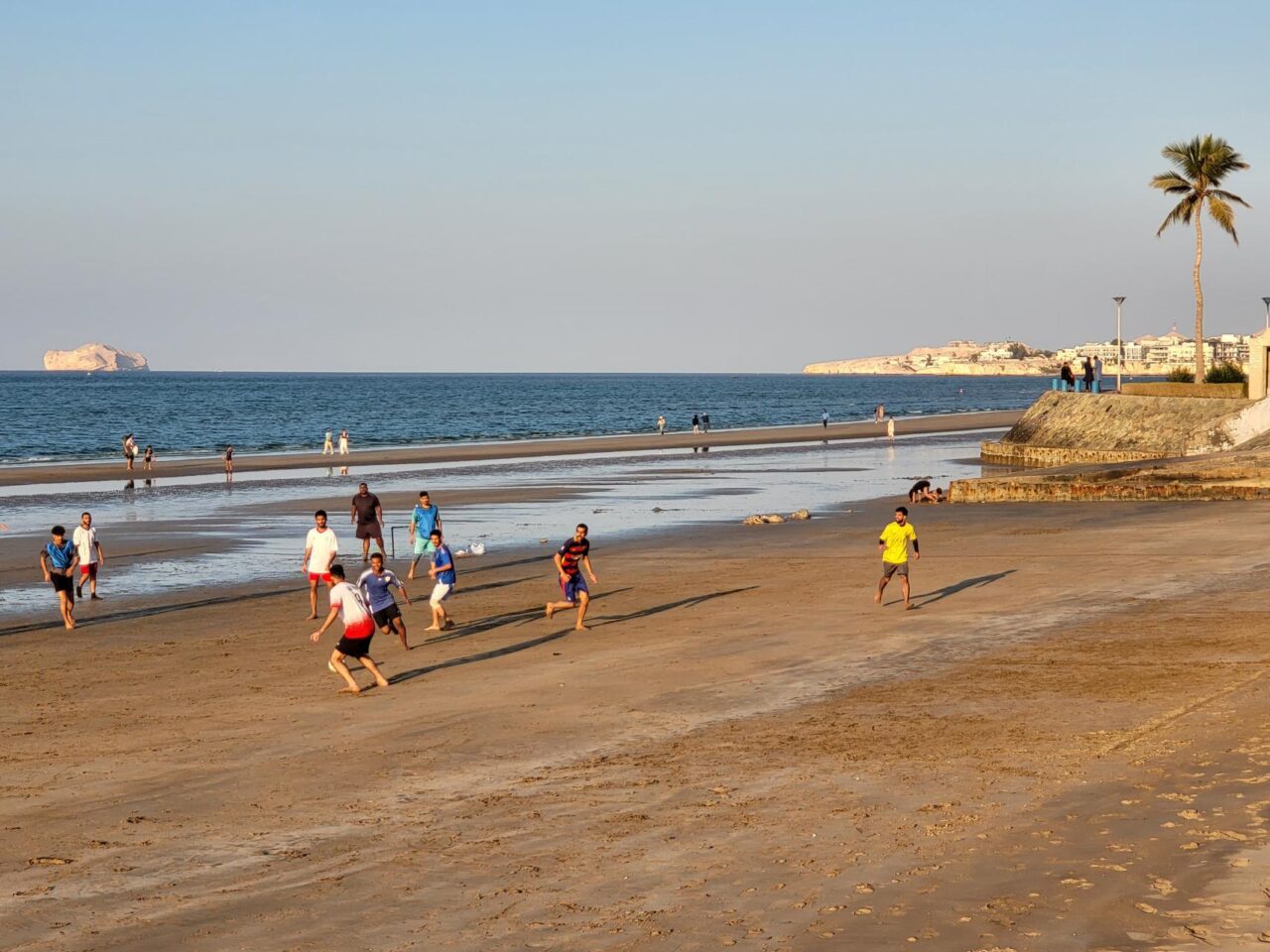


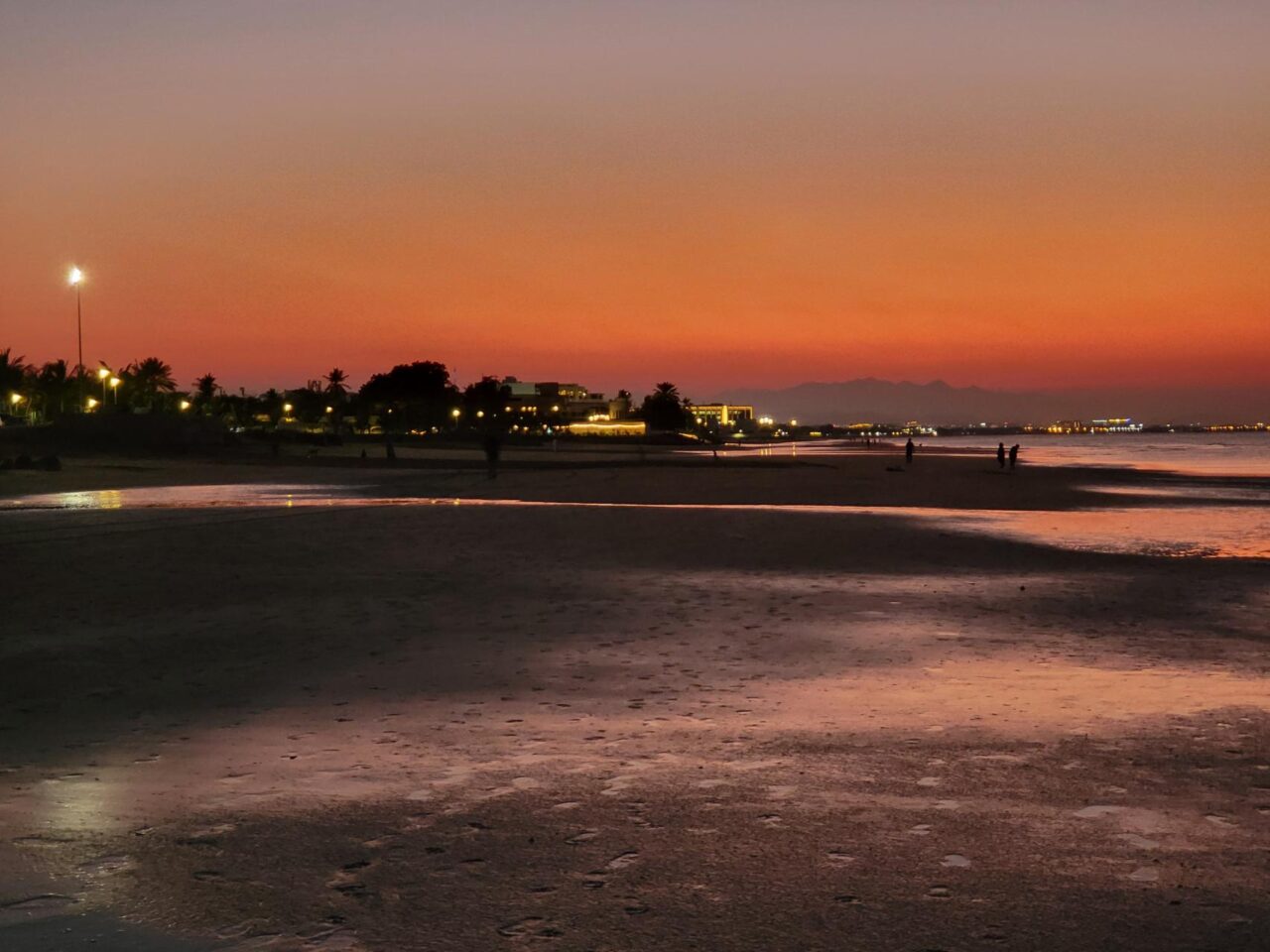
The following day, I took a taxi to Mutrah Souq, an old market, and the Mutrah Corniche, where I walked along its curvaceous shoreline and climbed the historic Mutrah Fort. A few kilometers away were the Al Alam Palace, Al Mirani Fort, and an impressive boulevard leading to the National Museum.
Muscat flourishes in monochromatic beauty: the crystal-clear green water of the Gulf of Oman along its shore, the pure blue of a cloudless sky, the sanitized white of its buildings and houses, and the bleached white robes worn by Omani men commonly seen on the streets. It doesn’t have to try hard to be colorful.
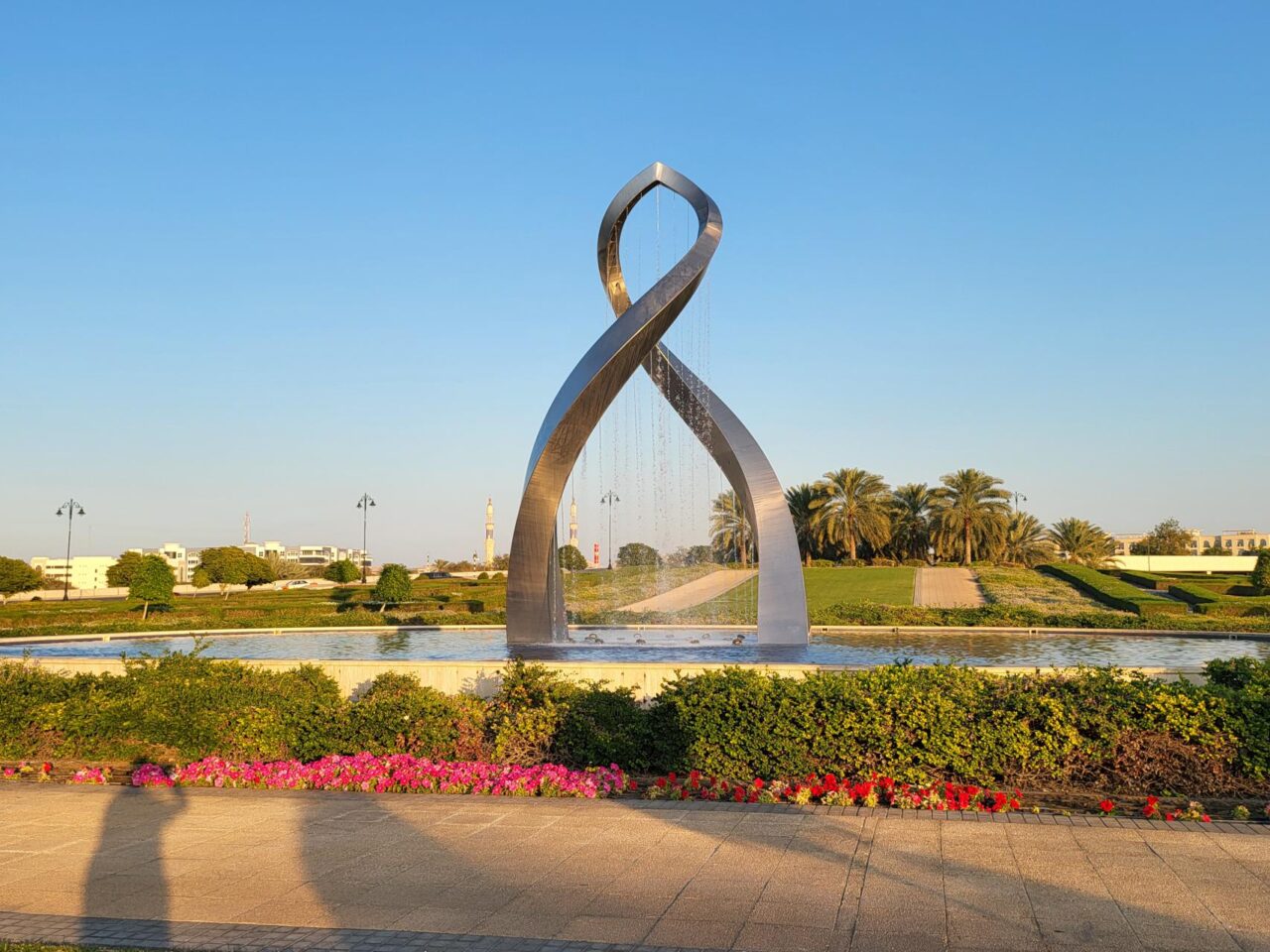
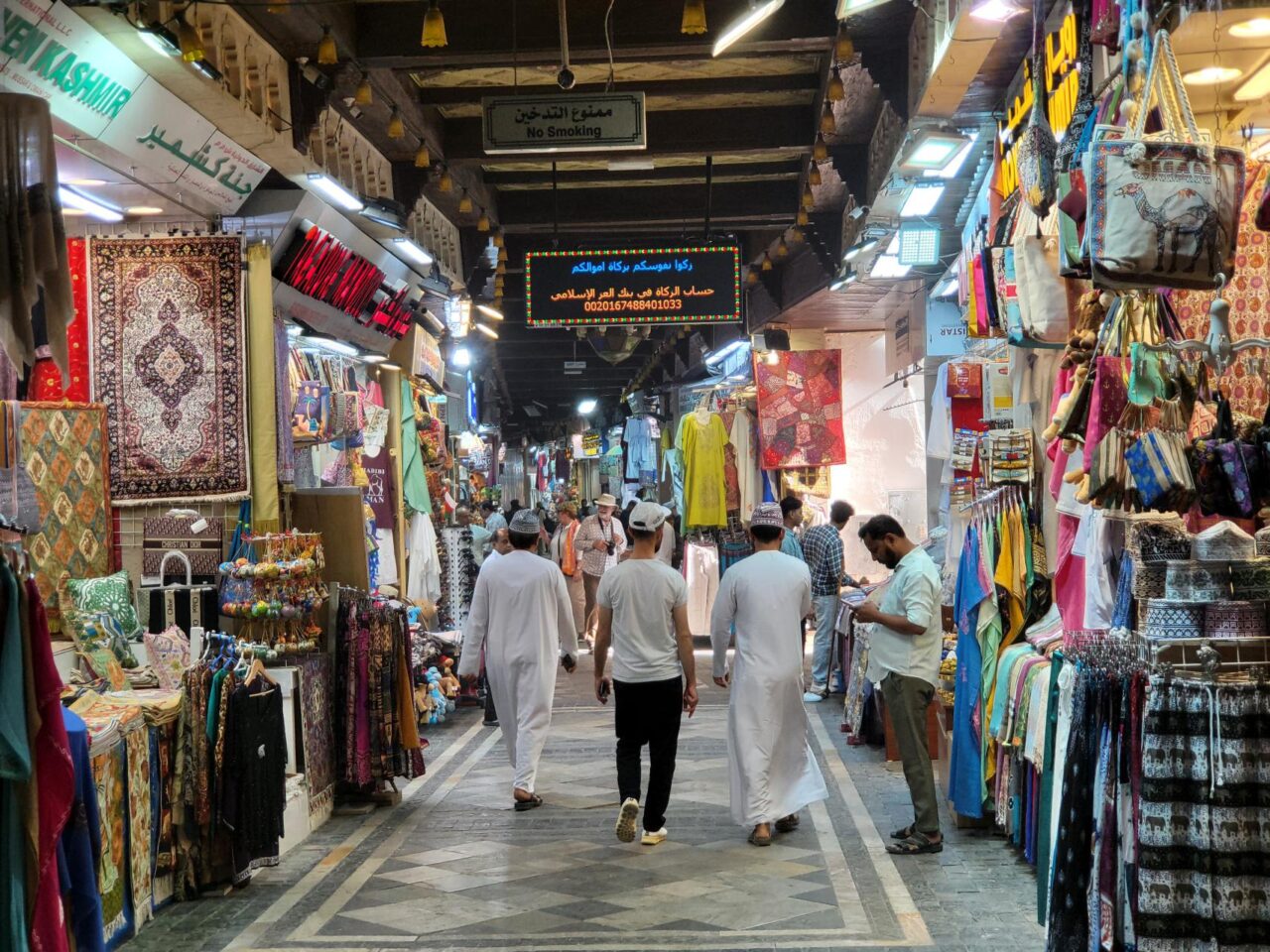


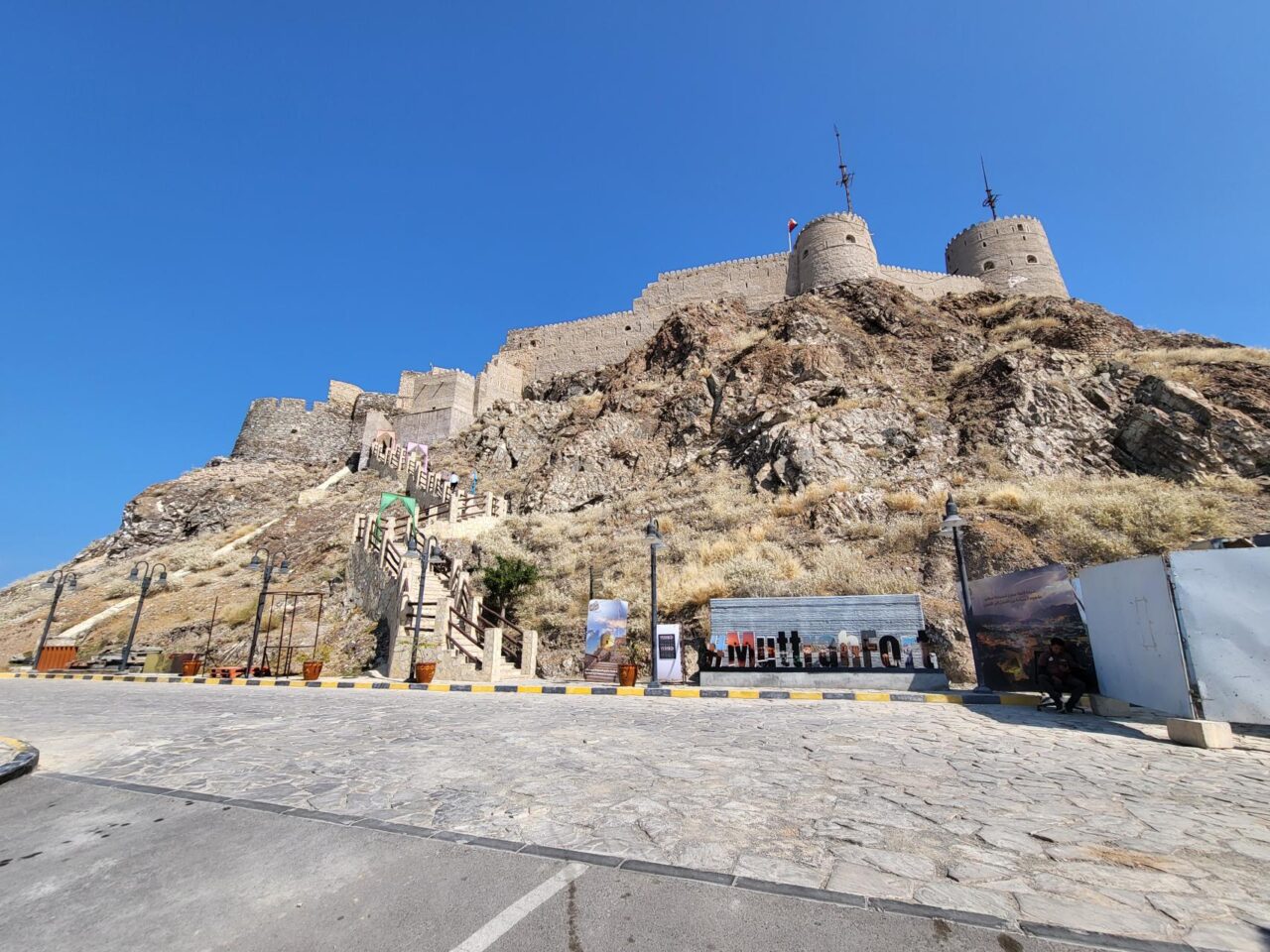



Dimmah Sinkhole, Wadi Shab and Sur. Visited on 19 January 2025.
After spending two nights in Muscat, I rented a car to drive along the coast of the Guld of Oman. After 130 km, I arrived at the Dimmah Sinkhole, a giant hole formed by the collapse of the underlying bedrock. The giant hole, filled with clear emerald green water, is a curious sight indeed. Its stairs allow visitors to descend for a swim. It reminded me of the stepwells in India, though this is a natural well sunk by nature.
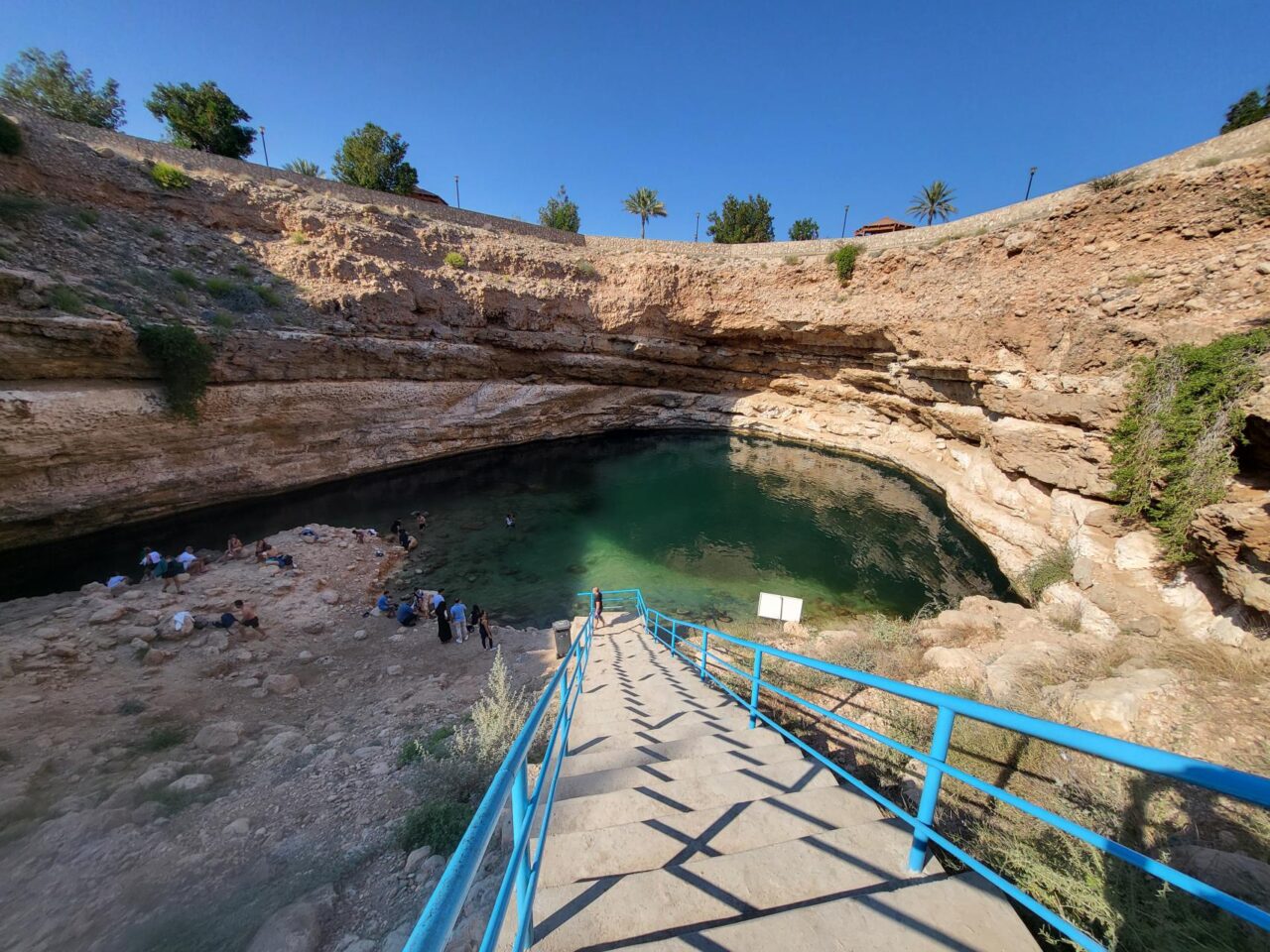
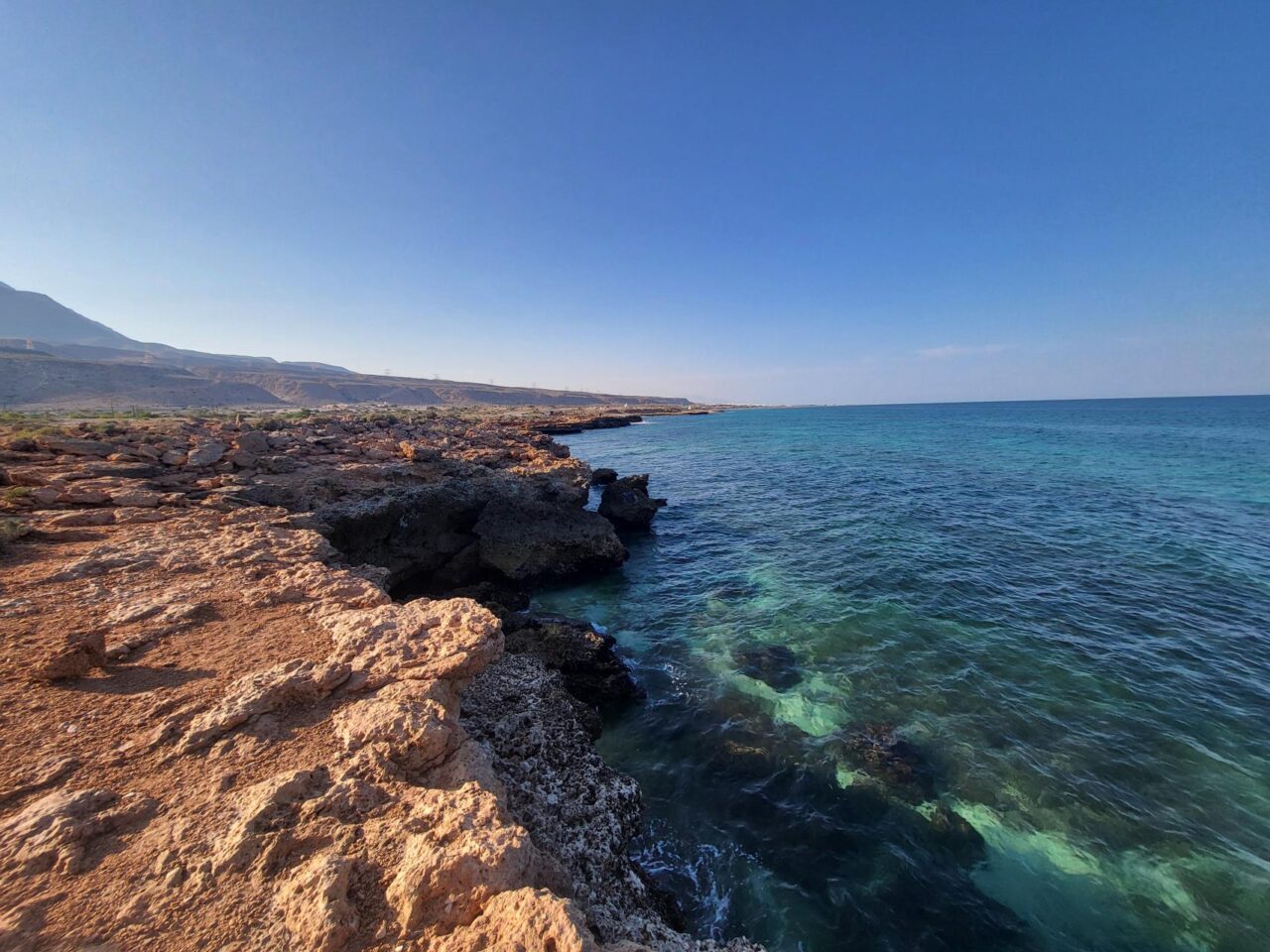
I then drove 30 km to Tiwi to stay the night, near where Wadi Shab is situated. And what a cool place Wadi Shab proves to be. I hiked on pebbles, rocks and boulders for 45 minutes each way. The gorge’s vertical cliffs scarred but gorgeous. Between the mountains and above them, the sky remains true to its color, true blue. A refreshing spring breeze blows through the valley. Clear and serene emerald green water fills the gorge. Set in the most unlikely of places, this has to be the coolest outdoor swimming pool ever, with the most seductive water to swim in. Indeed, young and old, boys and girls, even some hijab-wearing swimmers swam in the slithering pool. Simply irresistible!


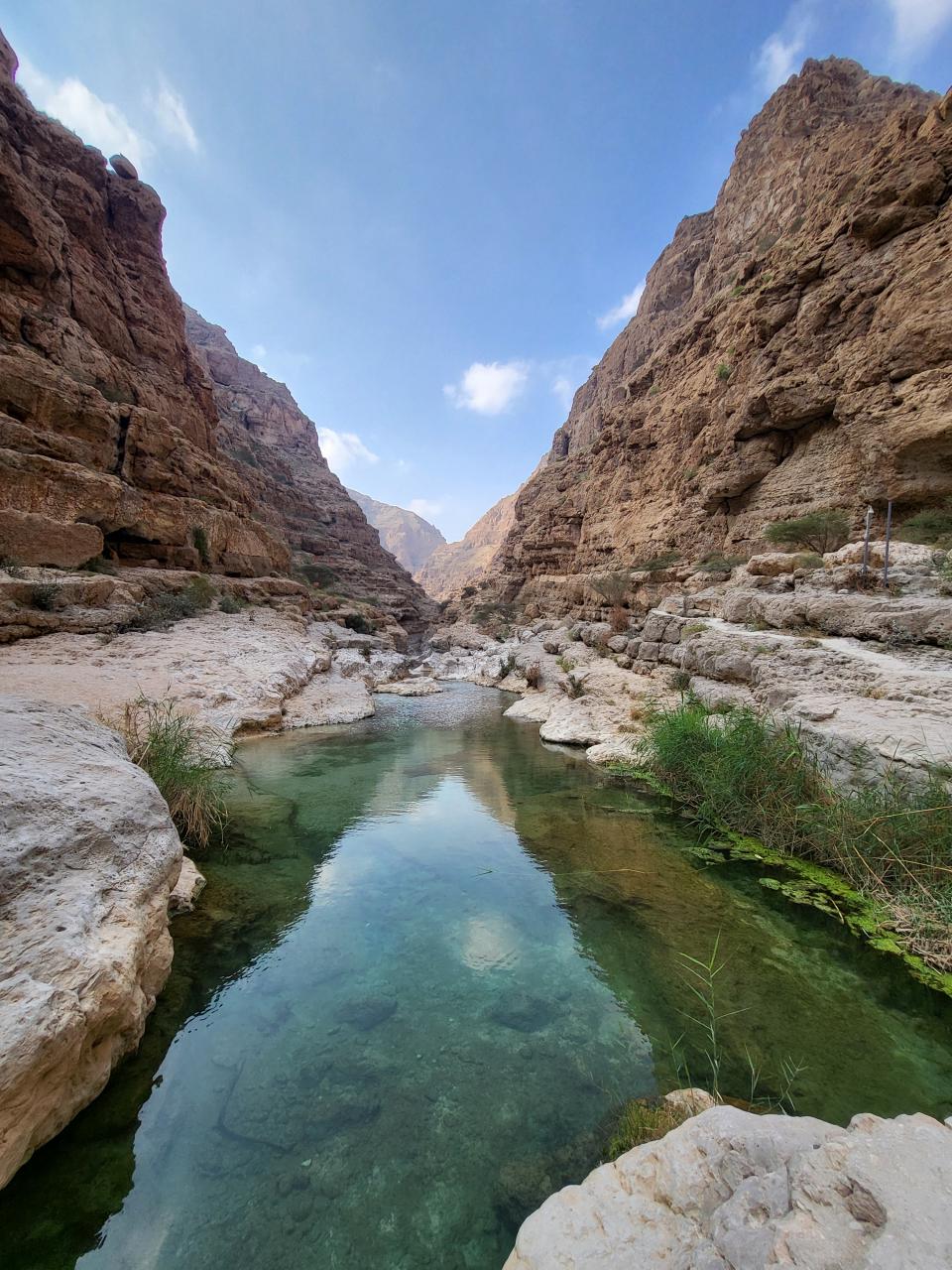
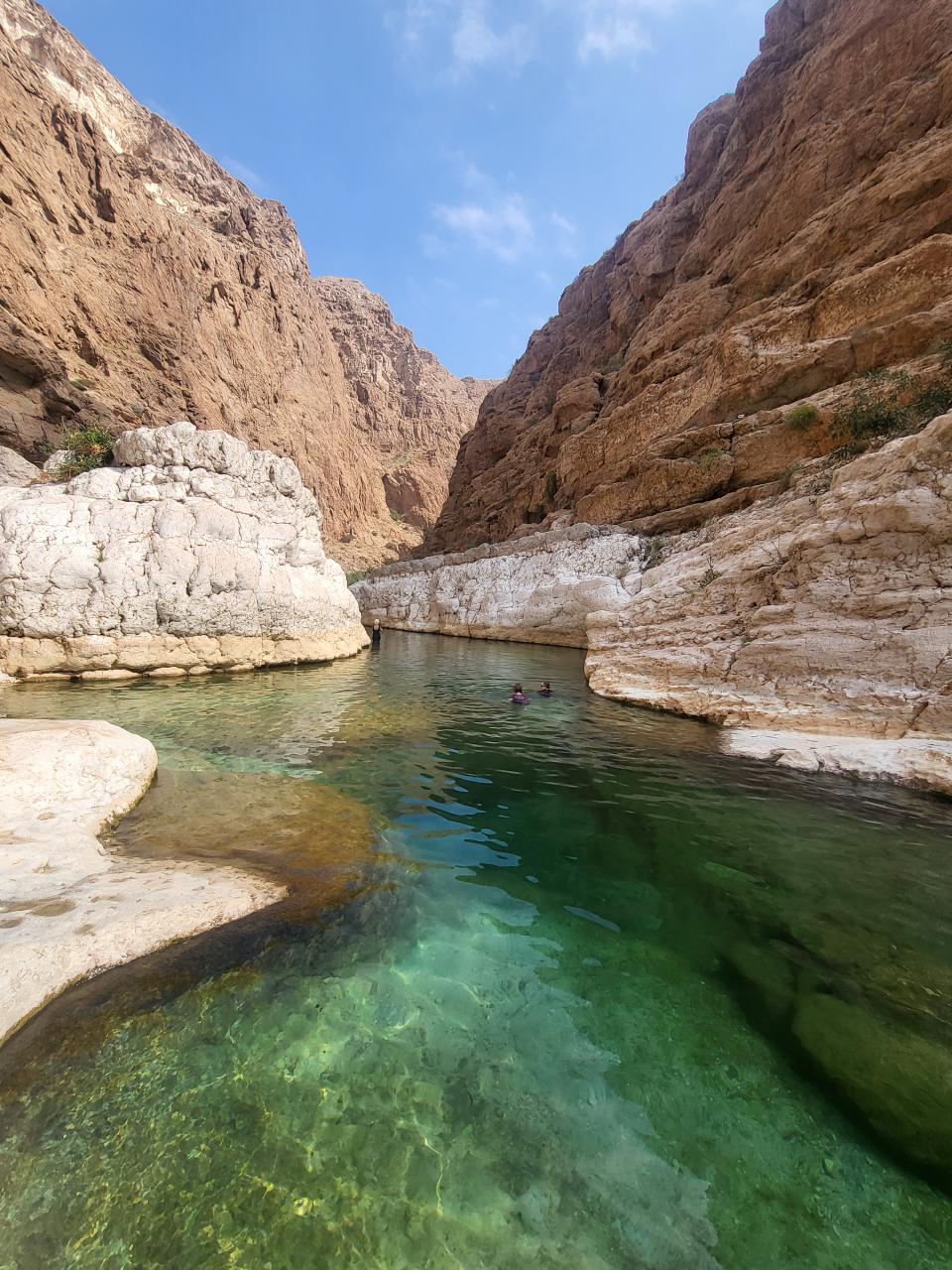
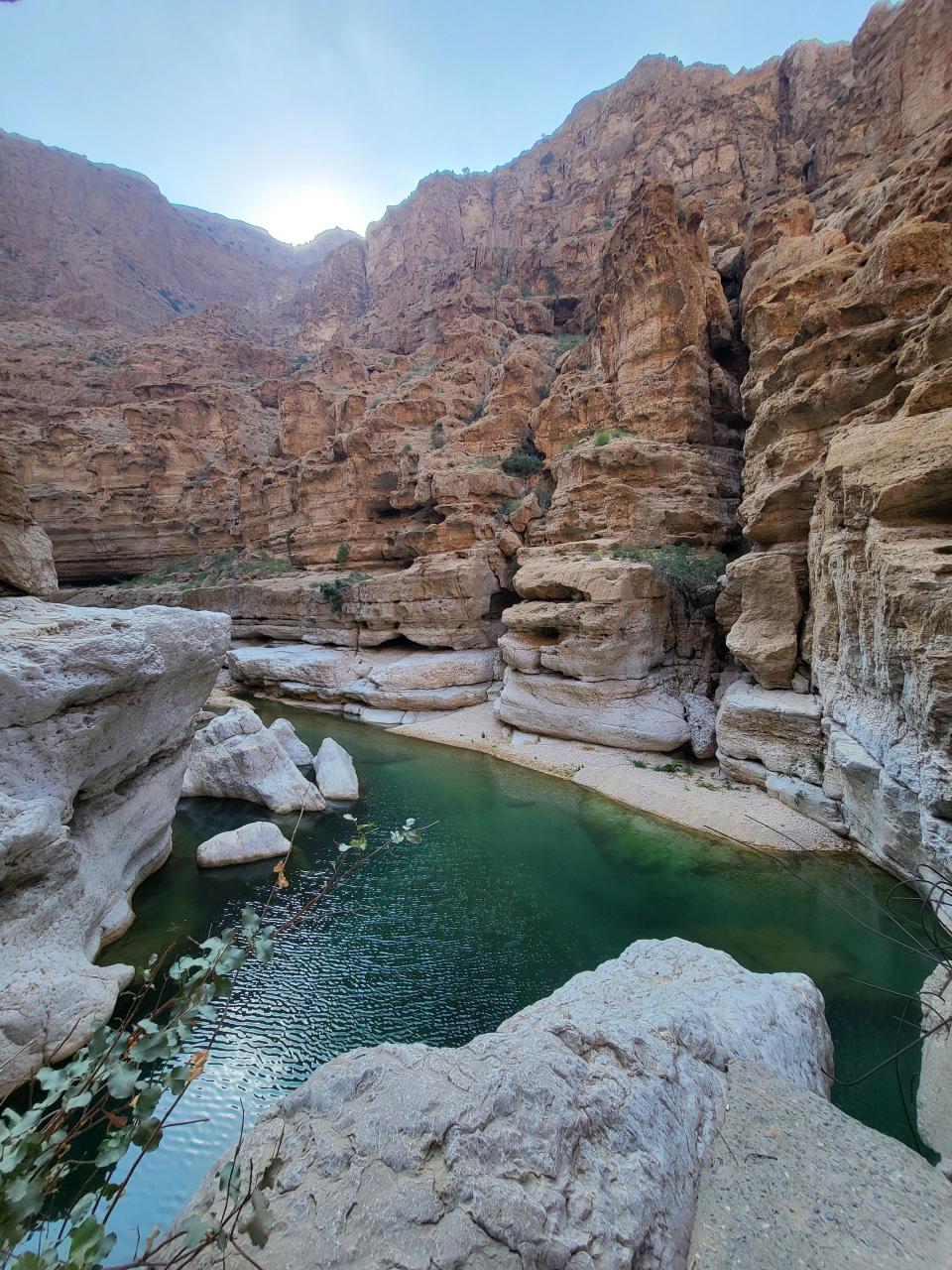
After spending a few hours at Wadi Shab, I drove for 50 km further down the coast to Sur. Its river has a big mouth. I climbed up a nearby hill, and the views were spectacular. Below was a city of white houses; its river mouth ushered in the beautiful water from the gulf. Then, River Ayjah meandered its way inland and soon into the sunset.
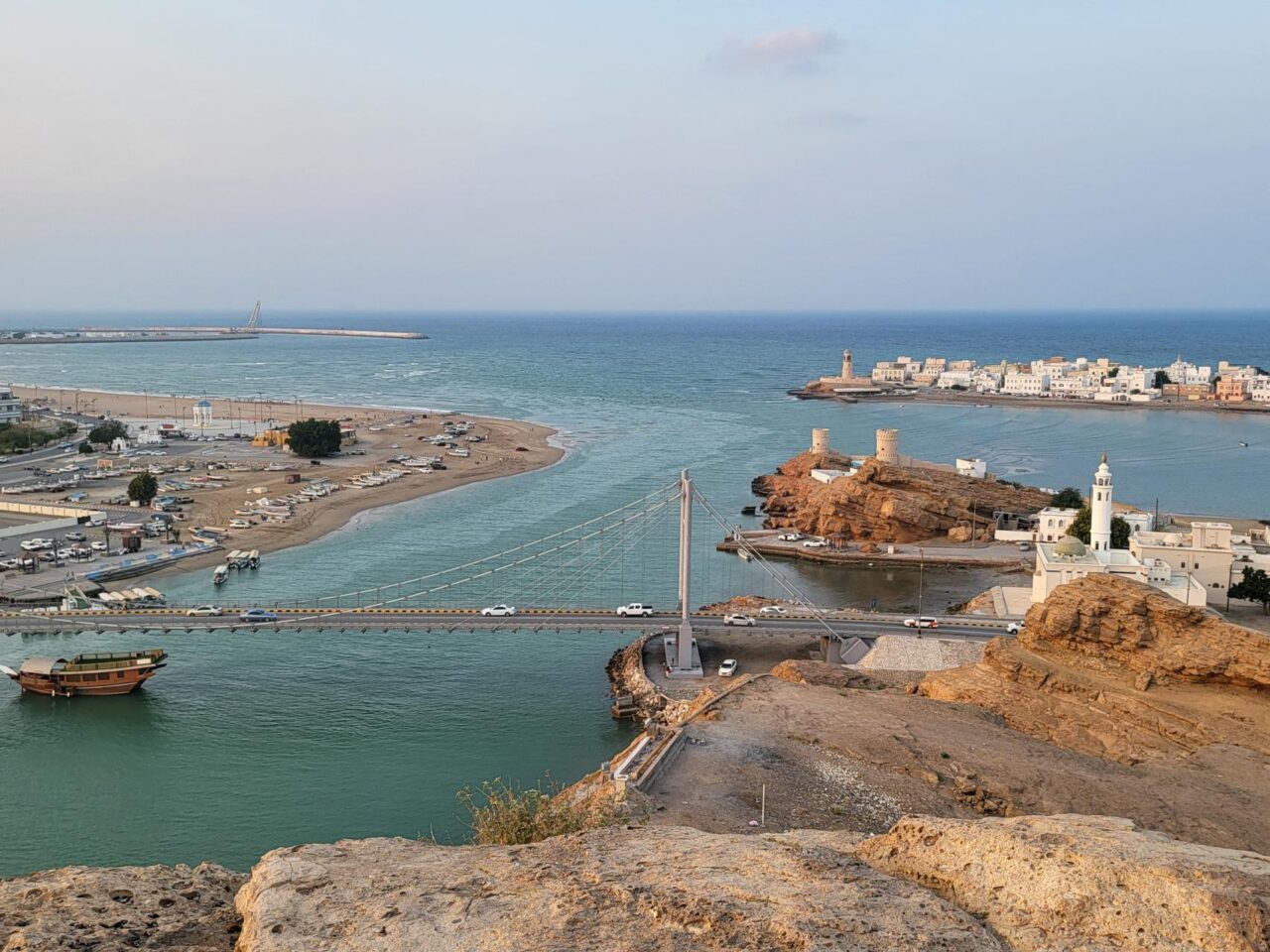
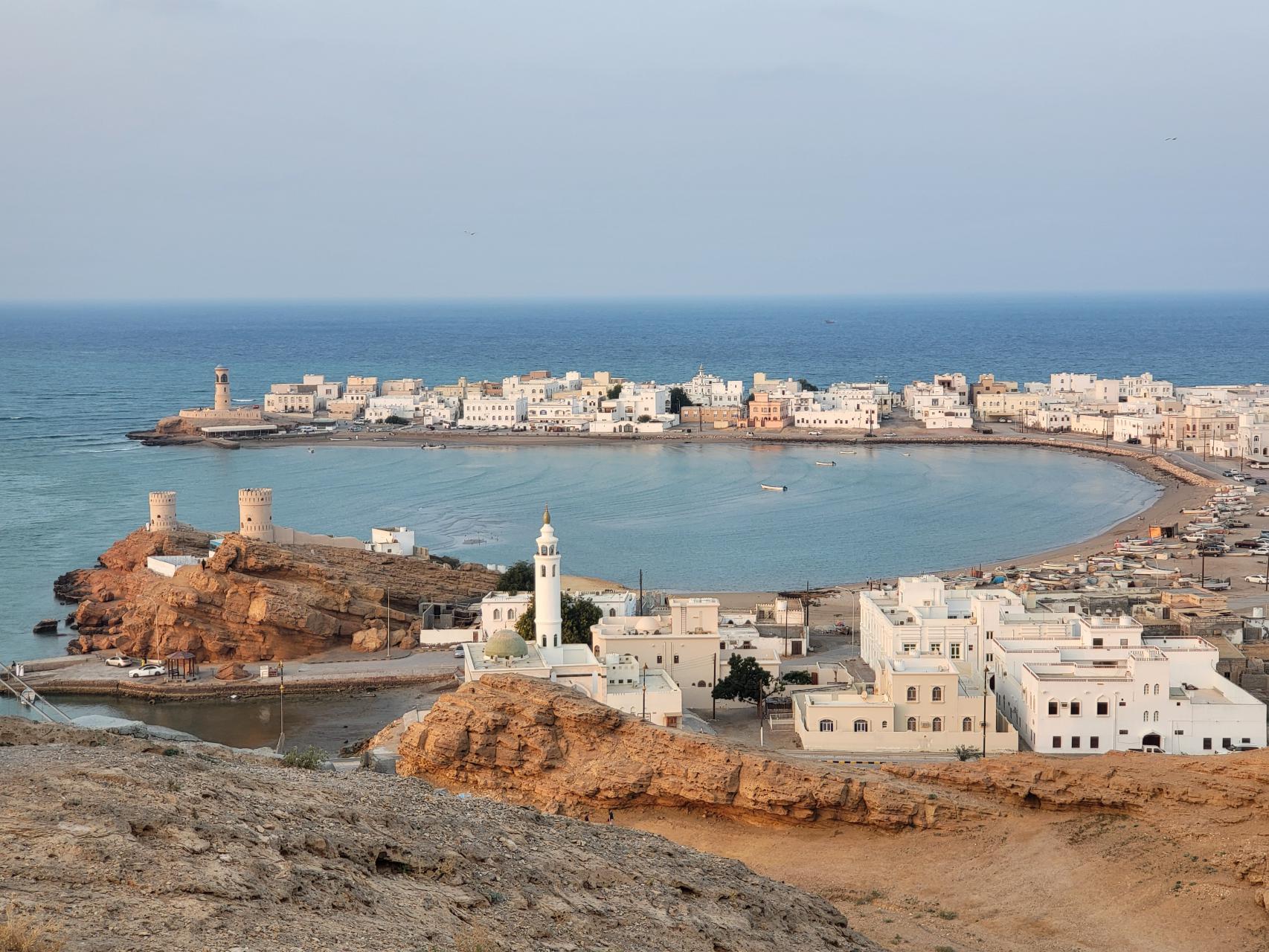

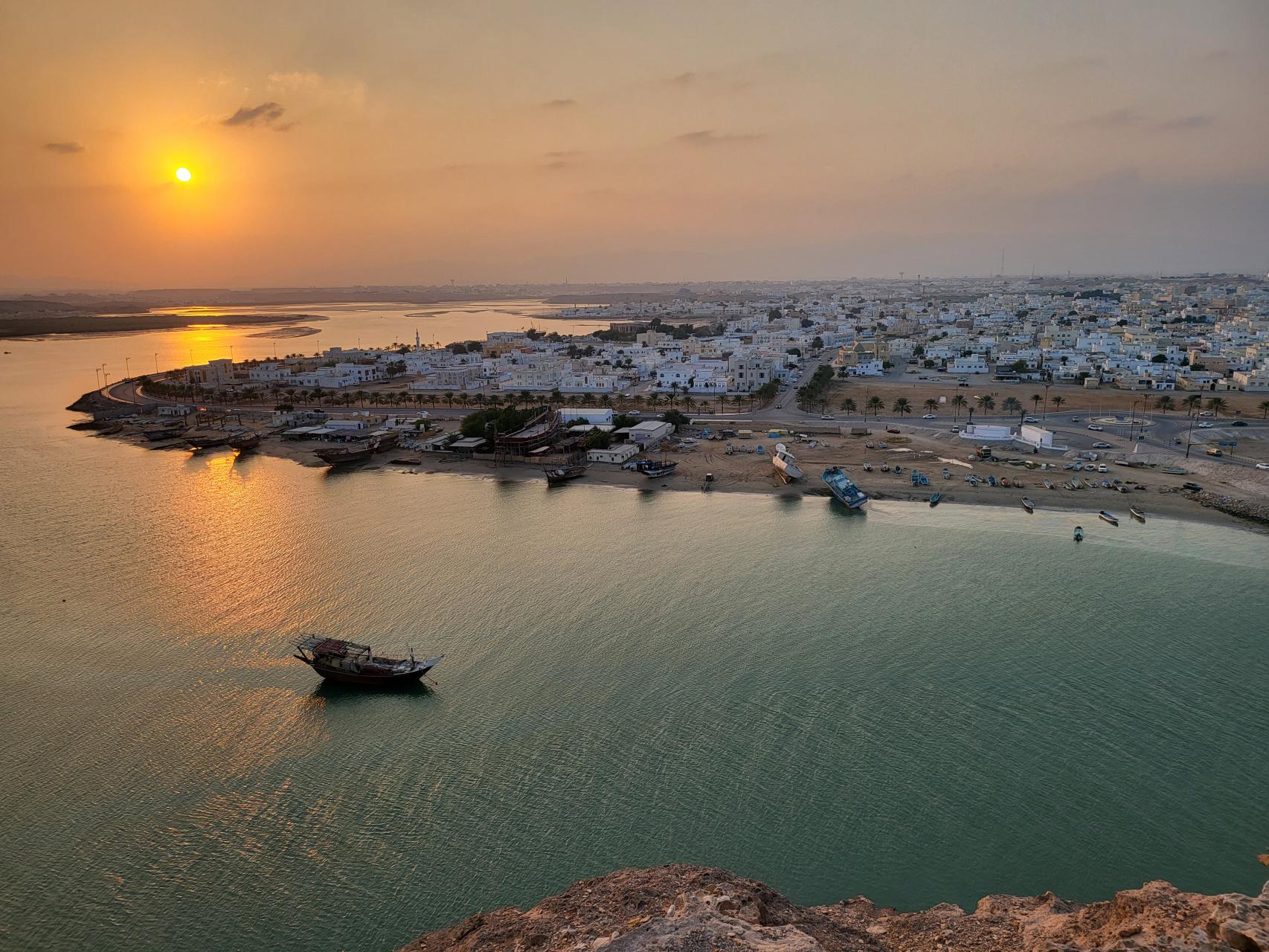
Ras Al Hadd and Ras Al Jinz, visited on 20 January 2025.
From Sur, I continued down the coast along the Gulf of Oman. An AI app suggested that I could drive toward Ras Al Hadd, mentioning the lighthouse as a landmark I could visit. On arrival, I squinted my eyes to spot the light house – a skeletal tower with a light bulb on top, probably the most lighthouse-like lighthouses I have seen. Ras Al Hadd has a wide and gradual fine sandy beach caressed by the beautiful waters of the Gulf of Oman. I then drove further down the coast toward Ras Al Jinz, sometimes on top of cliffs, stopped yards away to walk to the rugged edges, worn down by the pounding and lashing of the relentless waves. They now look like decayed teeth darkened through years of chain smoking. I ended up at Turtle Beach before turning from the coast driving south for 160 km towards Al Wasil.
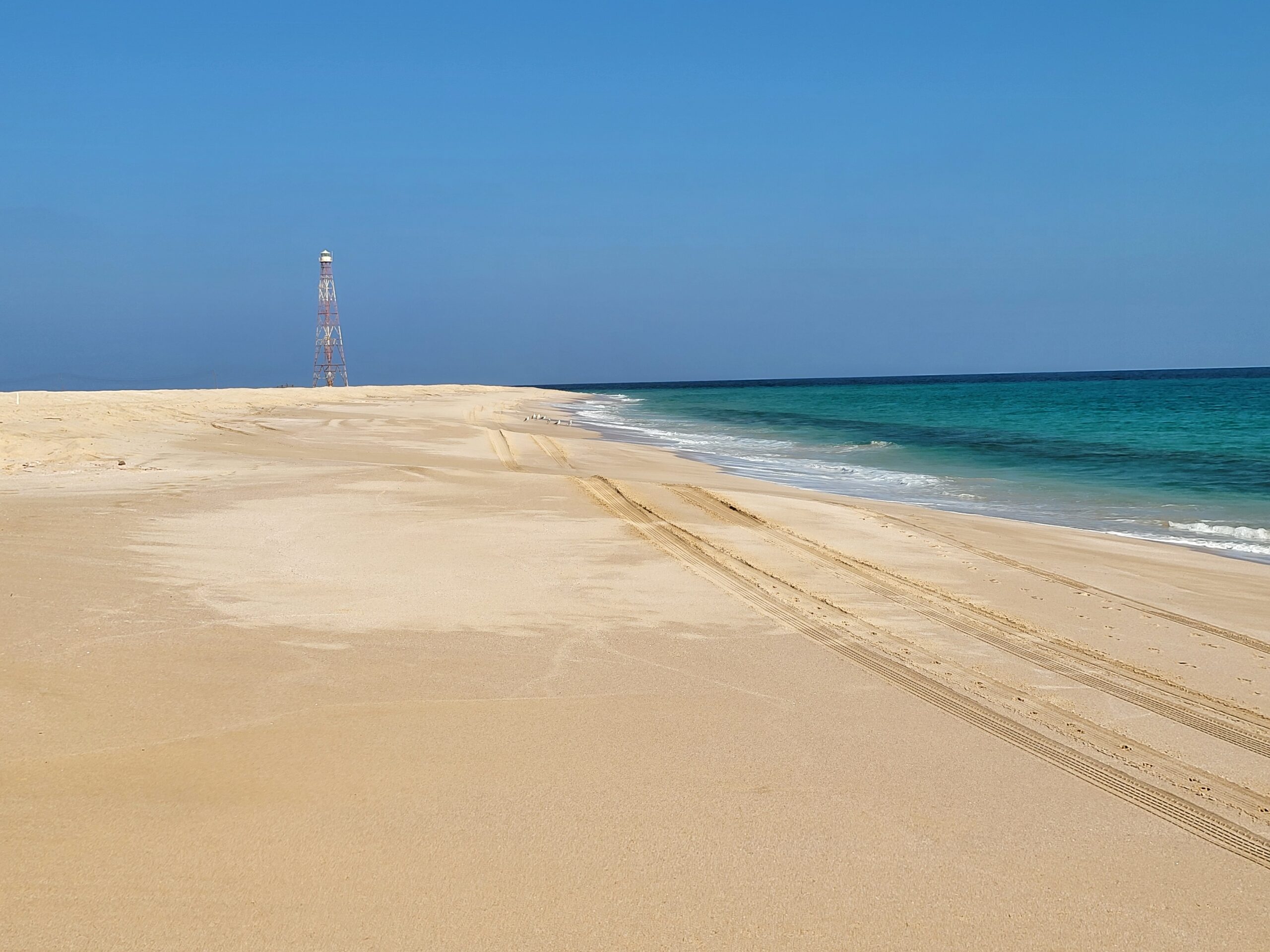


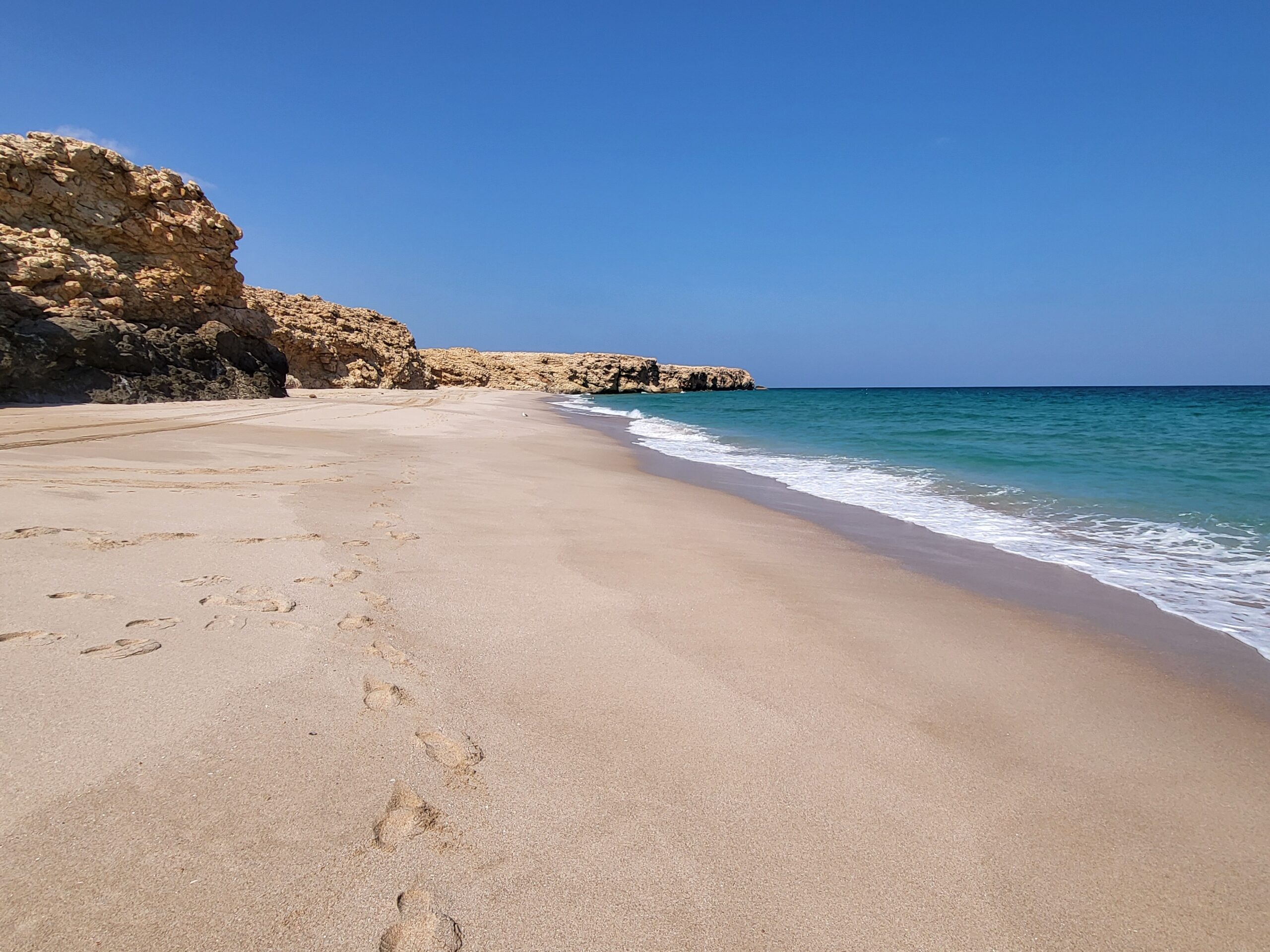
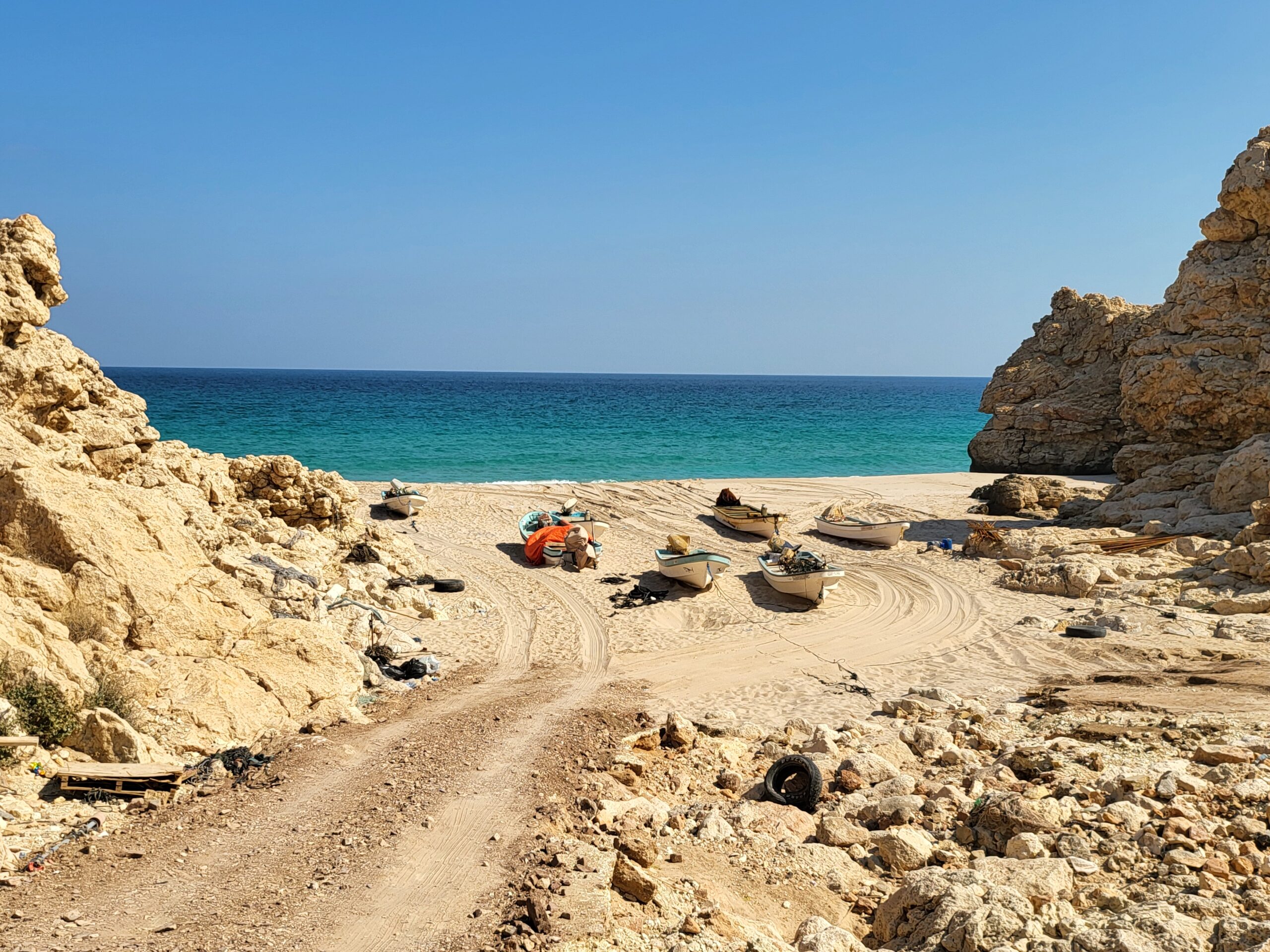
There was no hotels or hostels in Al Wasil, unless I wanted to pay more to stay in the desert camps. So my plan B was to sleep in the car, parked on the busy street front. At about 2 am, a couple of men dressed in the traditional white Oman robe knocked on my car window, identified themselves as CID personnel, asking why I was sleeping in the car. I looked around at that wee hour; mine was the only car in the entire street. After a while, another police car parked behind my car and honked but left soon after without questioning. The following day, I woke to a lot of honking by early traffic. So that’s how I have adventures on travel – if there are none, I create them.
Al Wasil and Wahid Bani Khalid, Oman. visited on 21 January 2025.
After a quick dahl curry and paratha bread breakfast, I drove toward Wahiba Sands Desert, on the road until it became sand. Houses live here at the edge. I did not want to camp in the desert nor planning to drive the car into the sand this time. So I parked the car and ascended the dunes, feeling the fine sand as my toes dipped inches into it. Surprisingly, the sand was still cool from the night’s chill. At the top, looking down at the village houses and the desert beyond were enough to satisfy my curiosity about Wahiba Sands.
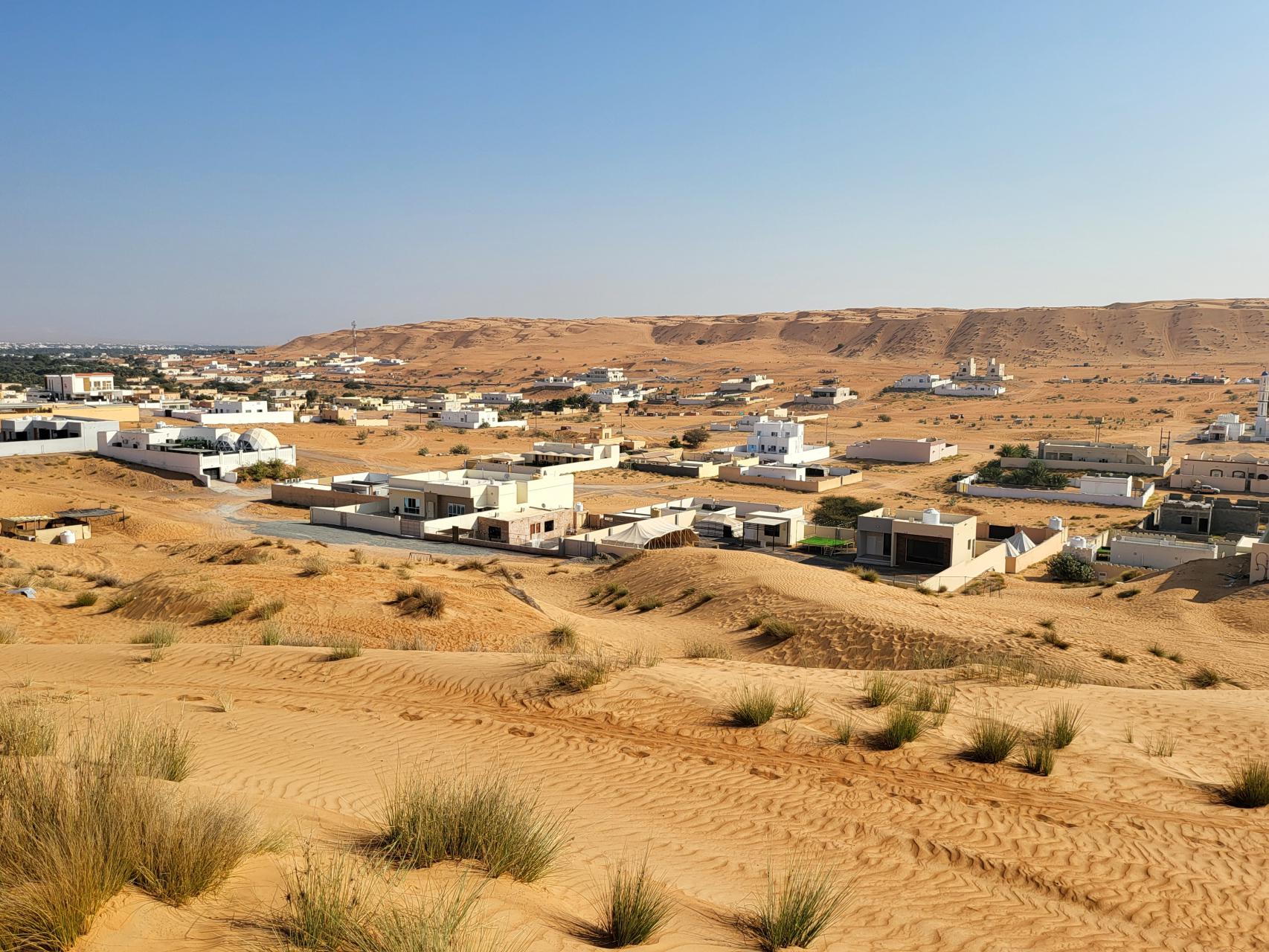
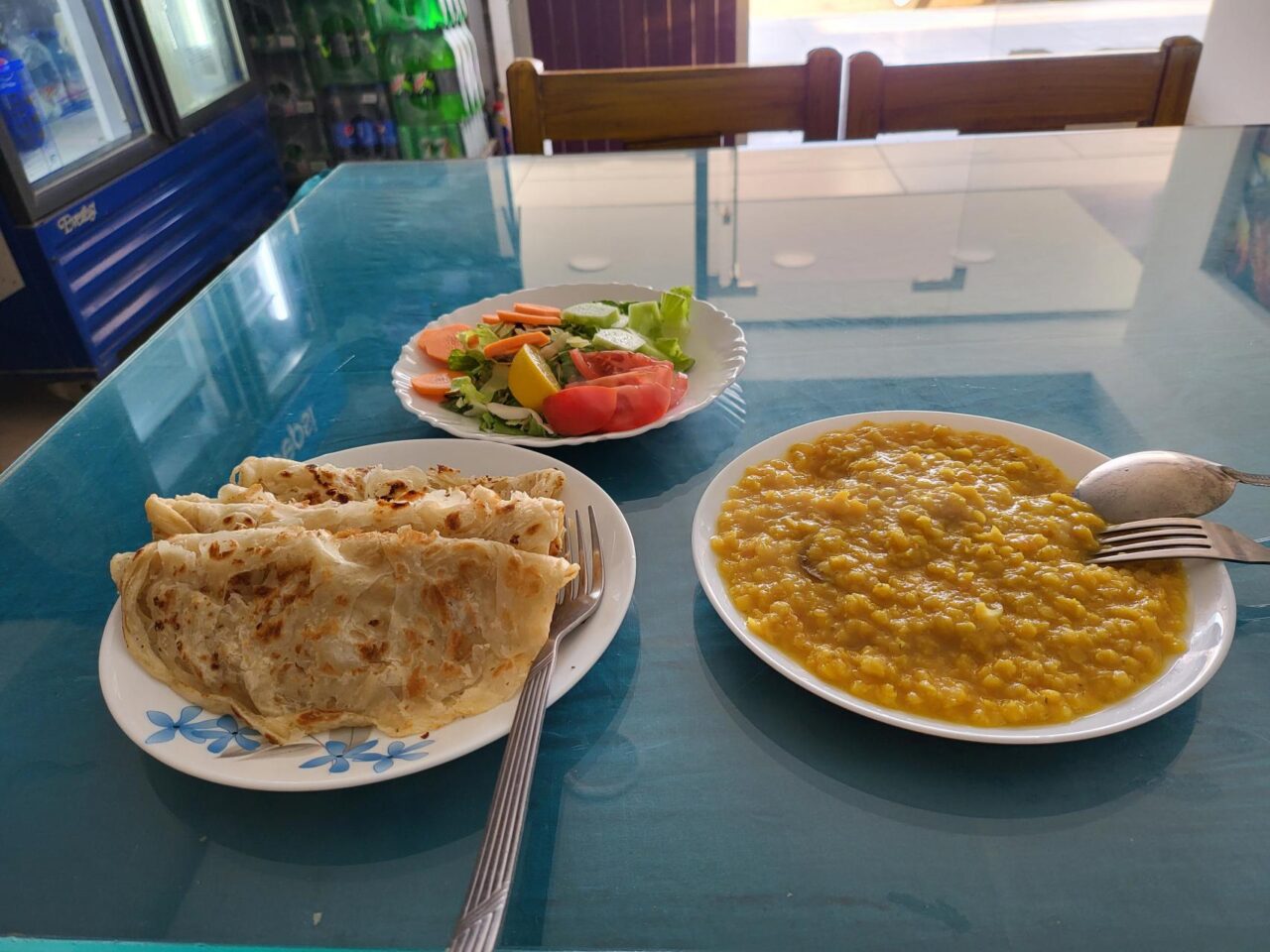

From Al Wasil, I drove on for 50 km to Wahid Bani Khalid. One of the most enticing waters, looking even more seductive in the barren and inhospitable surroundings. Like Wadi Shad, its serene emerald water flowed between barren rocks and cliff faces. A pool that slithers in the gorge so tempting many could not resist dipping in it, cliff-jumped into it while some swam from the open pool into the mountains. An oasis of stunning beauty!
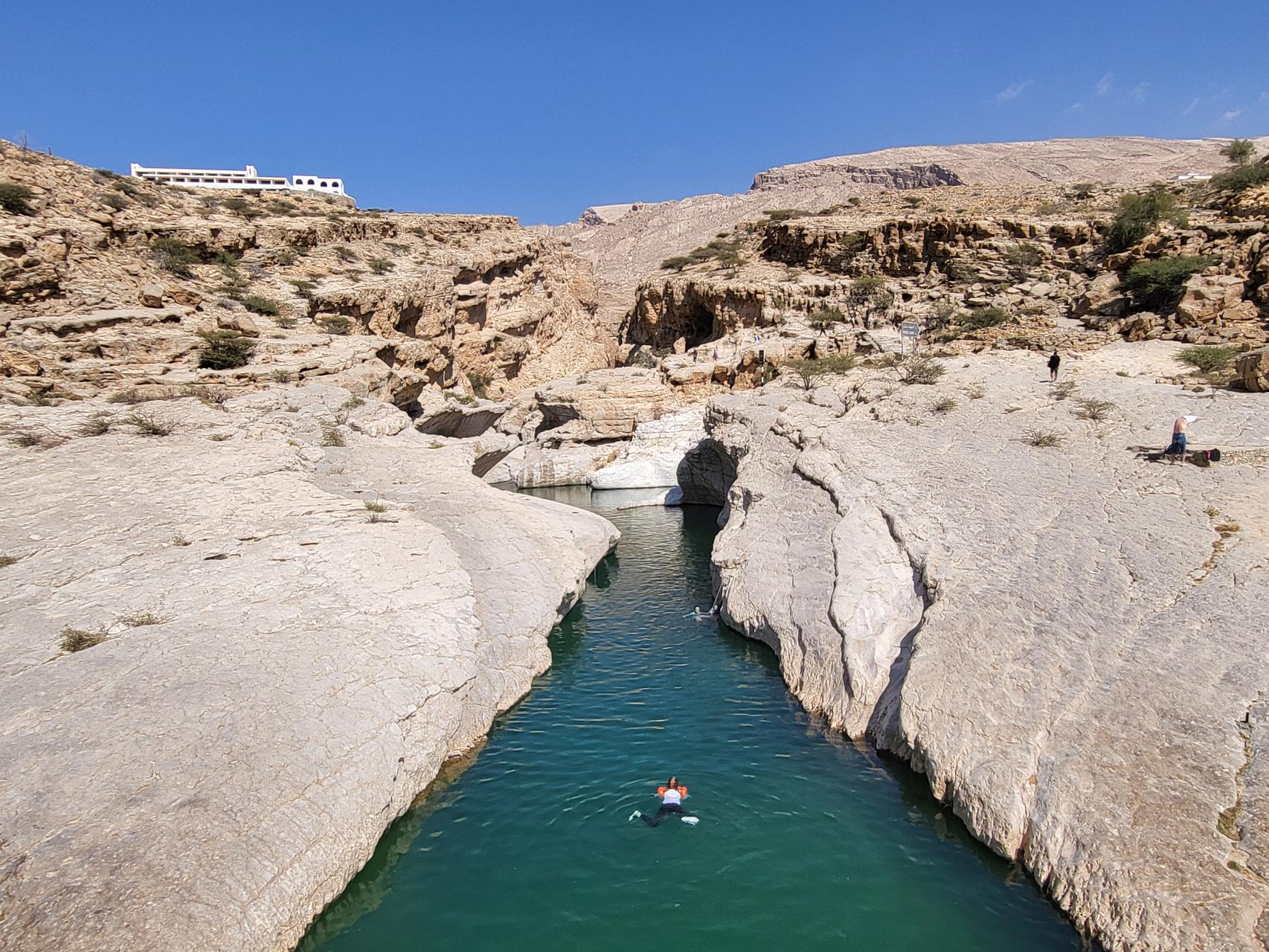

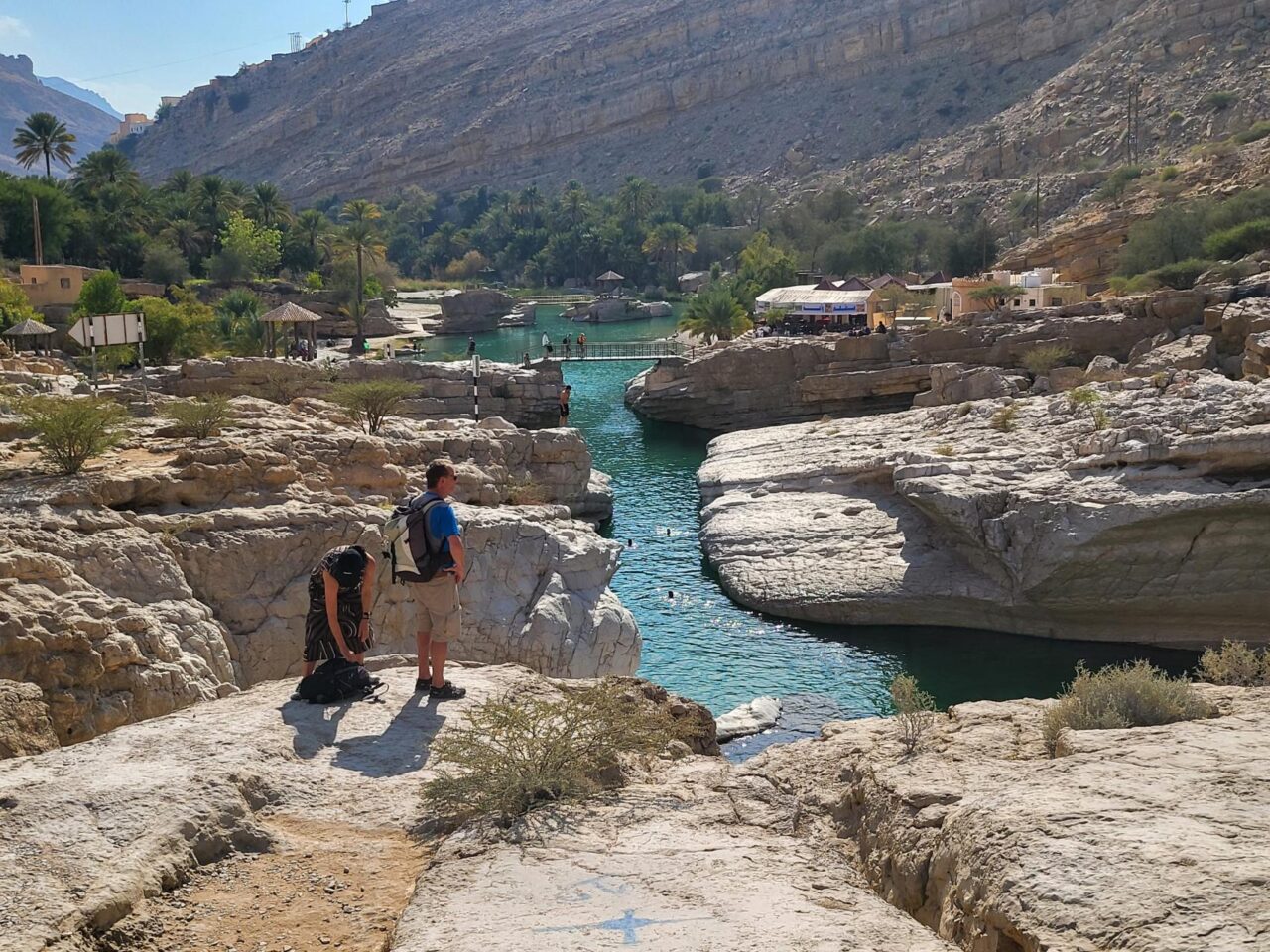
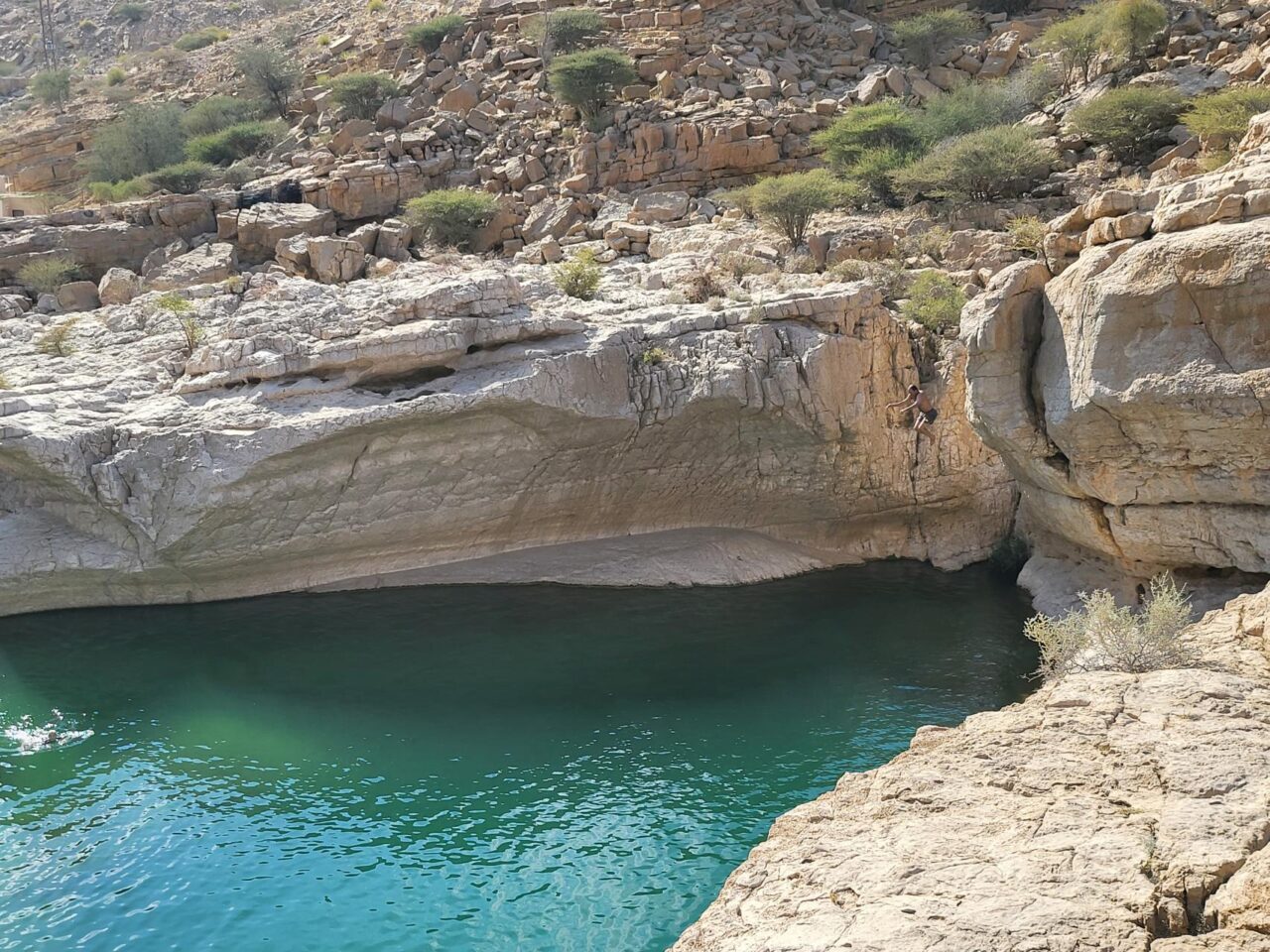
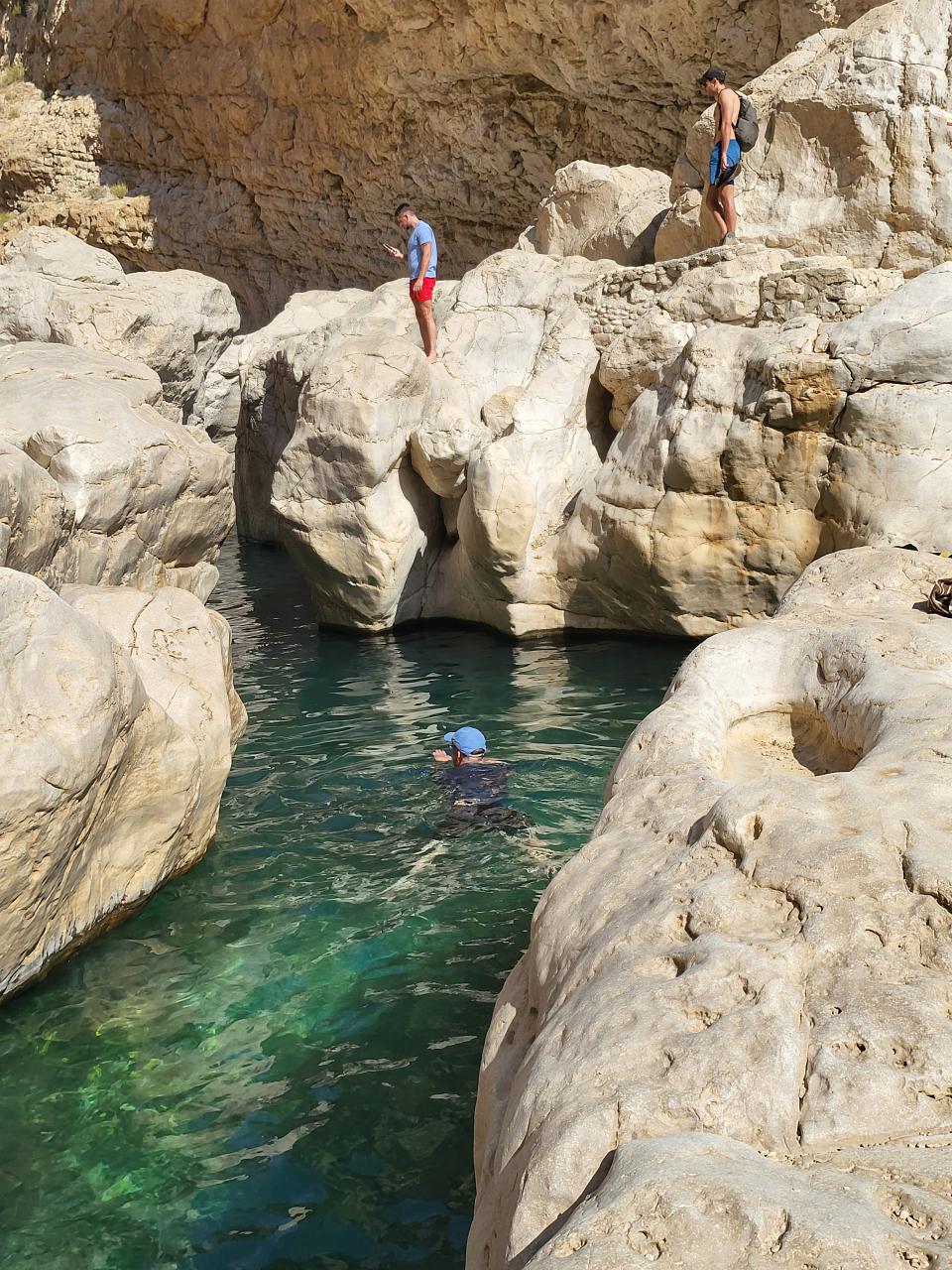
Nizwa and Jebel Shams. Visited on 22 – 24 January 2025.
From Wahid Bani Khalid, I drove 220 km to Nizwa and stayed 10 minutes away from the Nizwa Fort and Souq. This time, I only saw the fort from outside. The old souq is not large but has its character. This is the old area of Nizwa, as can be seen in the Al-Okor Ancient Neighborhood, where the mudbrick houses have been dilapidated and worn almost unrecognizably, and I fear and regret they are lost forever.
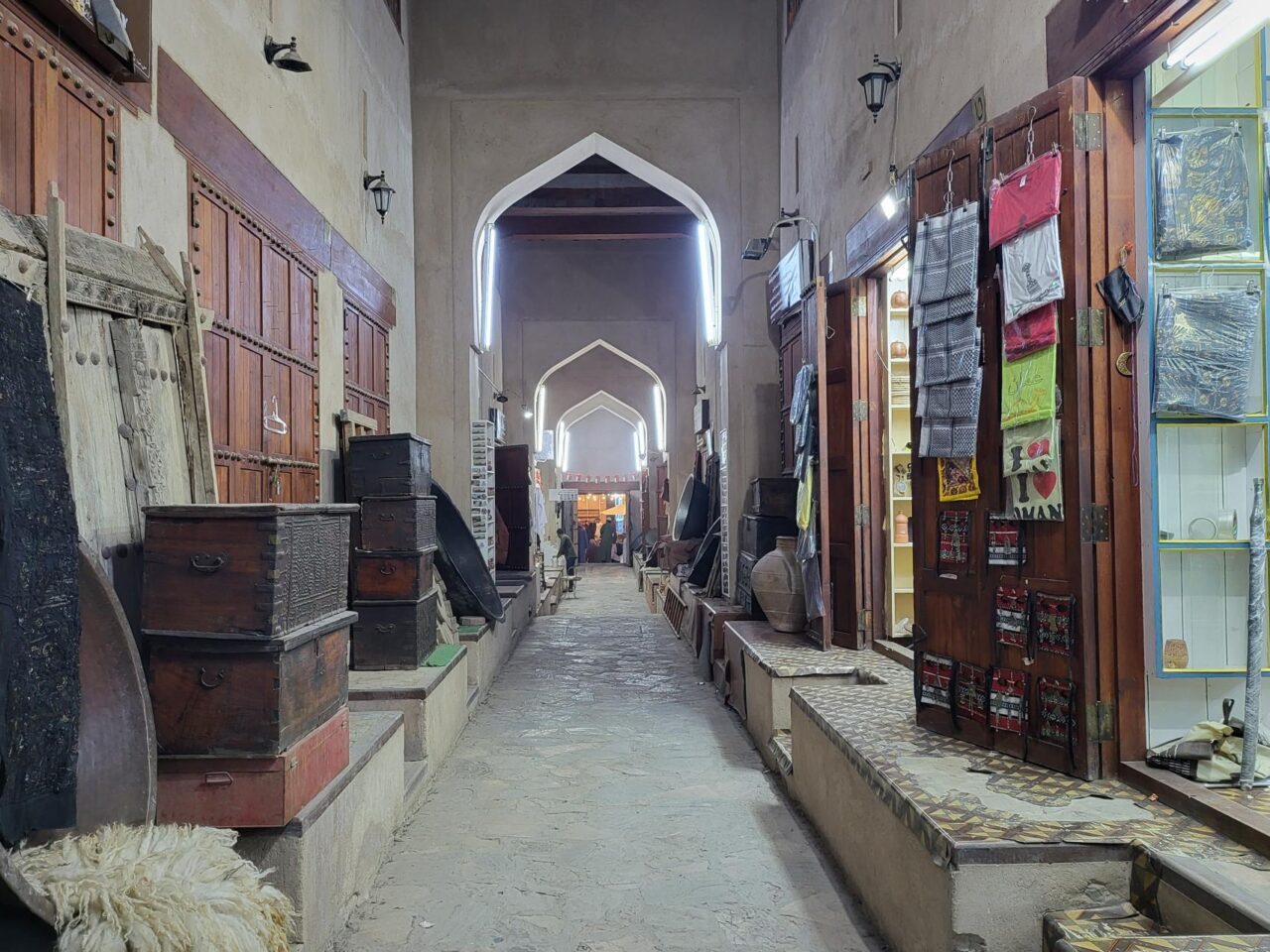

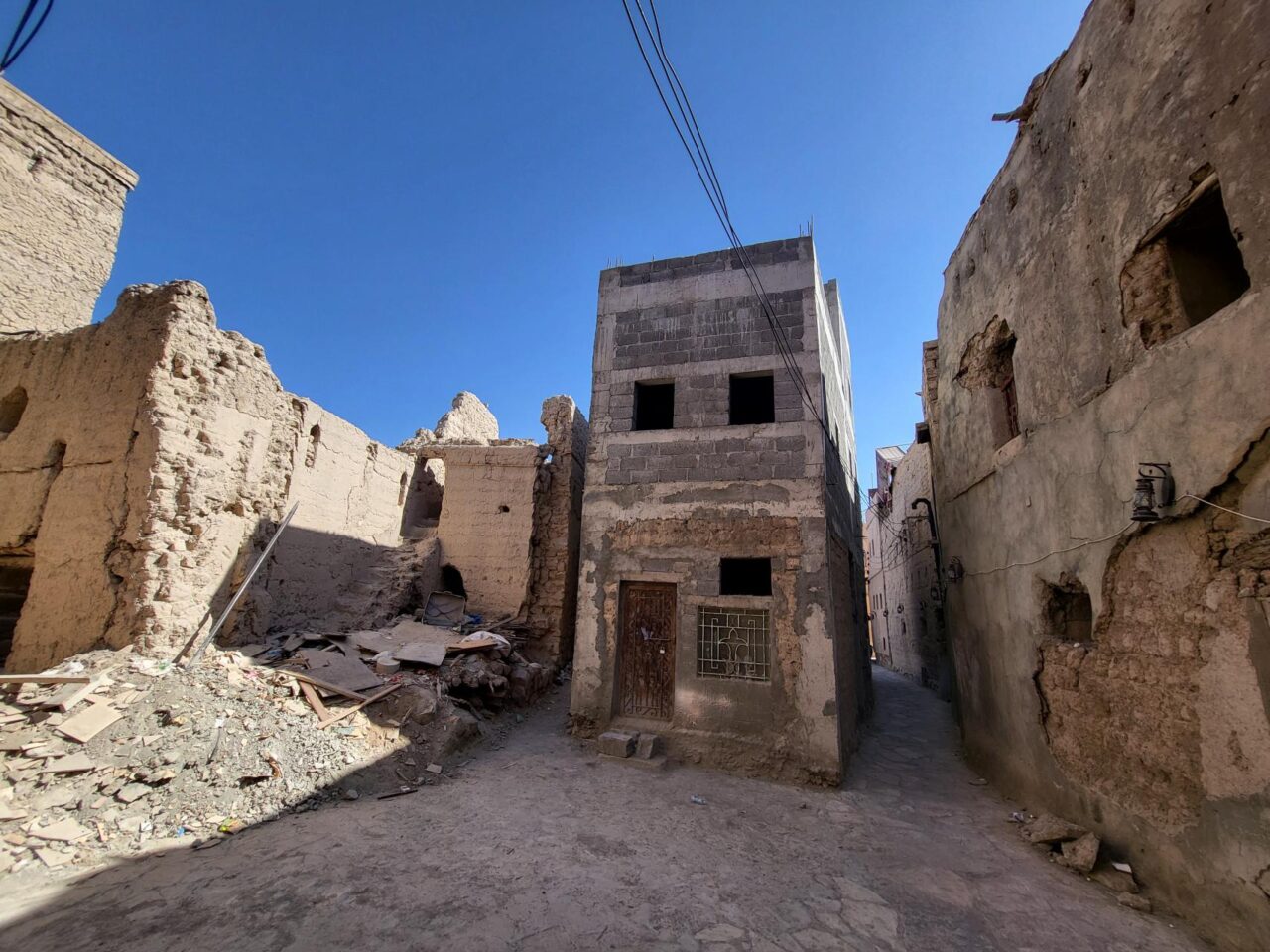
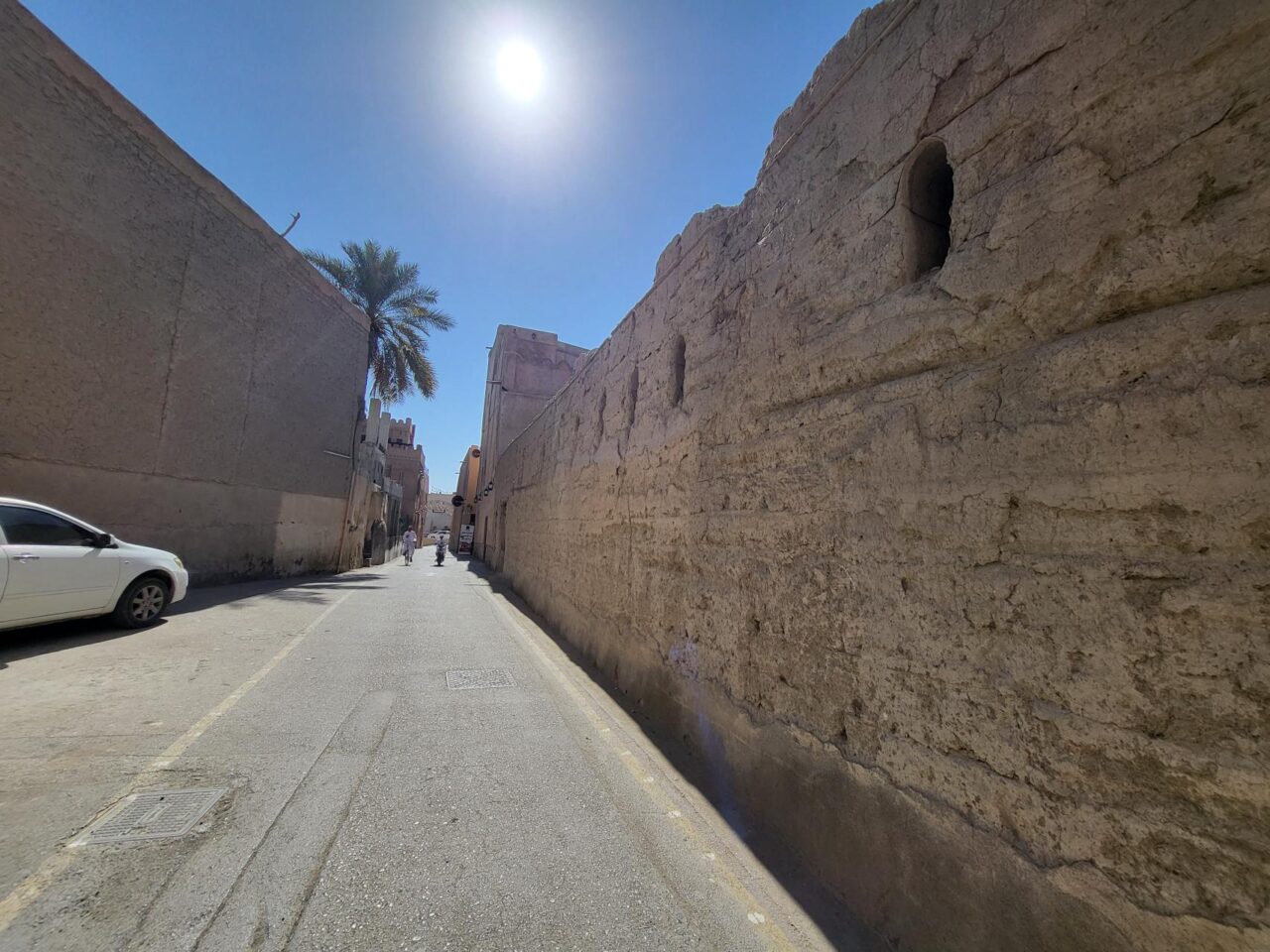

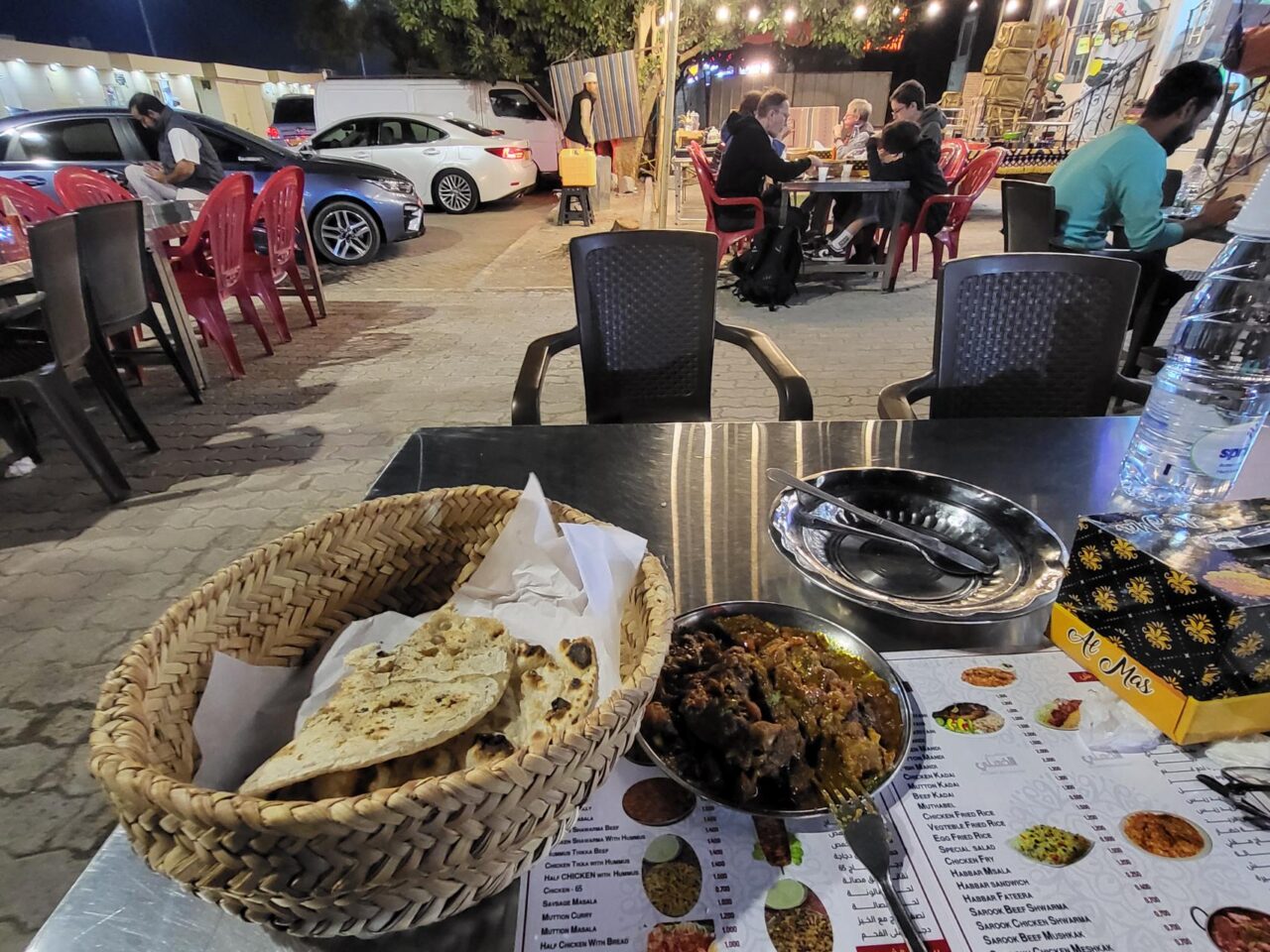
The following day, I drove for 2 hours to Jebel Shams, only 90 km away, over the unsealed and windy roads towards the last stretch. As I approached, 4-wheel drives were parked next to the road, and within meters of it, the Al Nakhur Canyon, often referred to as the Grand Canyon of Arabia. At 1000 meters deep, and a landscape so edgy and ruthless, my knees were wobbly in the breeze. I then drove on 4 km to the famous Balcony Walk. I hiked on the edges for more than 20 minutes until I realized I had gone on the wrong side, effectively outside the balcony. I quickly retreated. Back at the starting point, I spent the next one and a half hours each way, on a trodden path, often inches from the steep drop. It was truly a balcony walk, high on the edge of these rugged mountains, inches from the steep slopes that plunge to the abyss below.
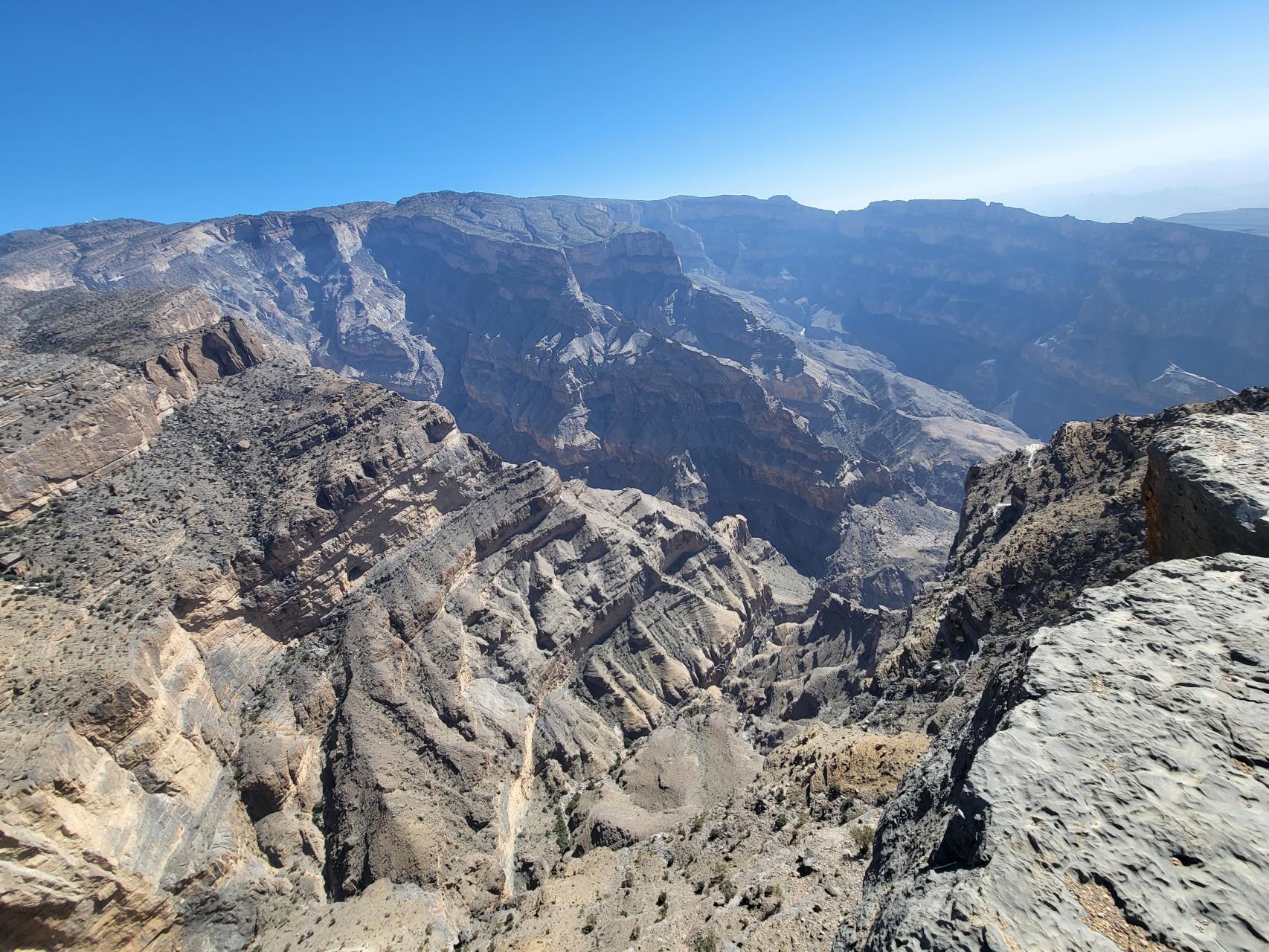
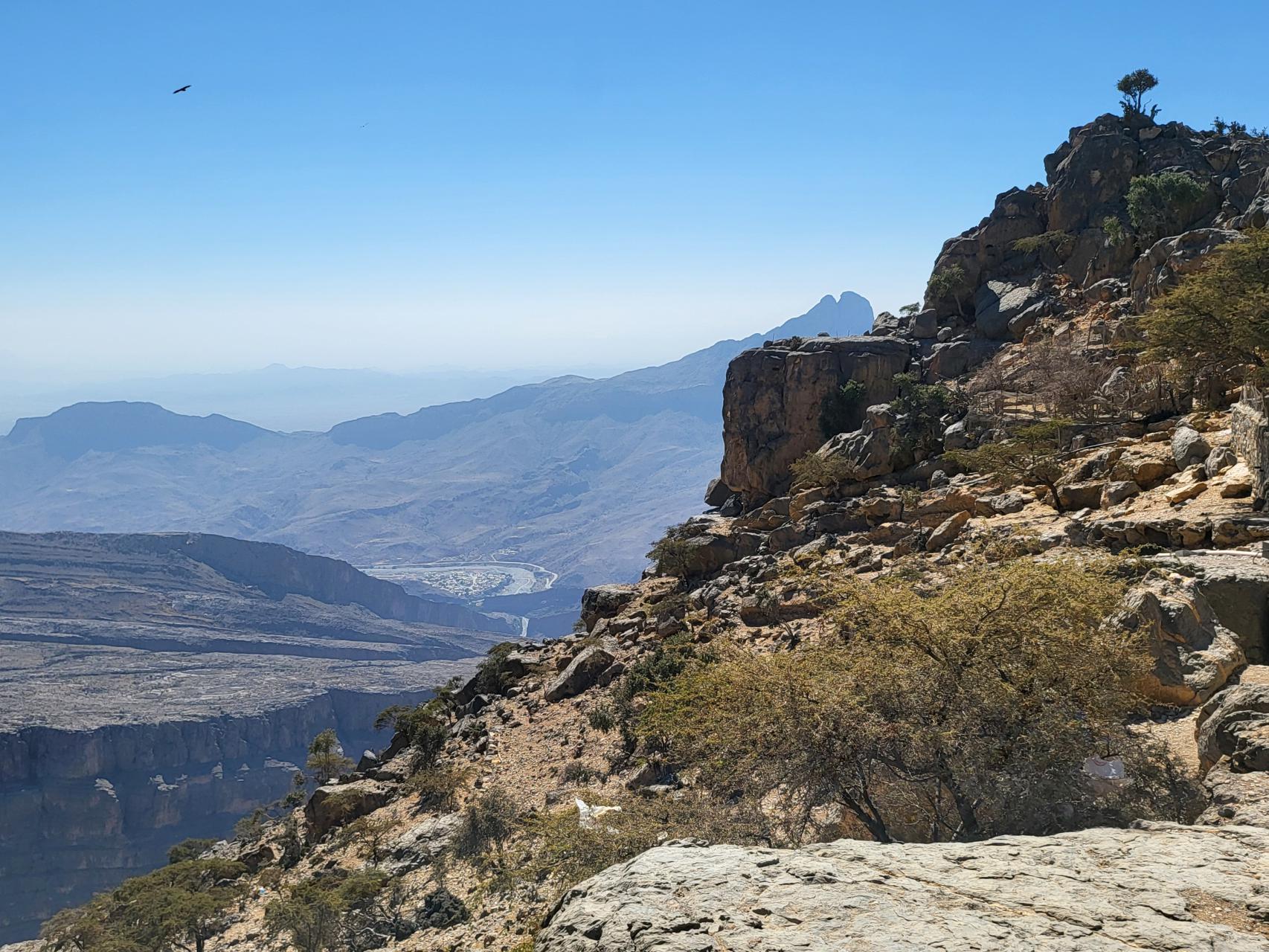
The next morning, I was up early to be at the Nizwa goat market held every Friday morning. By 7 am the goats started to come. Tourists and buyers sat and stood around circular steps, the sellers dragging their goats, some held like babies in their arms, like on a circuitous conveyor belt, only stopped by to be scrutinized and negotiated with the interested buyers. No health certificates were produced, just old-fashioned kicking the tires and checking under the hood – prospective buyers checked the teeth like a good dentist, felt the muscles, then reached the below to grope whatever was dangling in the underbelly. It is humiliating for the goats but how else do you find a new home, right?

Tomorrow I will return to Muscat to conclude my 10-day tour of Oman. Oman, you impressed me as the gentleman of the Middle East. Oh Oman, how you surprise me, wonderfully.
Click the link below to go to the next stop:
The itinerary on this trip:
Oman Muscat->Dimmah Sinkhole->Wadi Shab->Sur->Ras Al Hadd->Ras Aal Jinz->Al Wasil->Wahid Bani Khalid->Nizwa->Jebel Shams->Iraq Baghdad->Kurdistan Erbil-> Kurdistan Sulaymaniyah->Karbala->Najaf->Babylon->Tunisia Tunis->Sousse->Kairouan->Monastir->El Jem->Carthage->Italy Sicily Palermo->Sicily Syracuse->Sicily Catania->Malta->Madrid->Dominican Republic Punta Cana->Les Terrenas->Santo Domingo->Puerto Rico->Miami

Interesting read! The focus on statistically superior returns at platforms like 55bmw vip link is smart – players do consider those odds. Quick registration & verification (like the 90-sec signup!) are key for usability too.
B52cc sounds interesting. What kind of action do they have there? Anyone cracked the code and made some serious cash? I’m game! See what’s up: b52cc
Hey guys, just tried luckycolaasia. Pretty slick site, I like the layout. Got a couple of wins, nothing major, but hey, it’s something! Could definitely use some more tournaments or something to spice things up though. Worth a shot!
Spintimeph, ah? Not bad, not bad! I’ve spent a few evenings there. It’s fun to kill some time. Give spintimeph a whirl.
Hey, 80wins is pretty cool. They got a decent selection of games and the site is easy to use. Nothing too special to write home about, but a solid place to throw down a few bucks. Give it a try at 80wins!